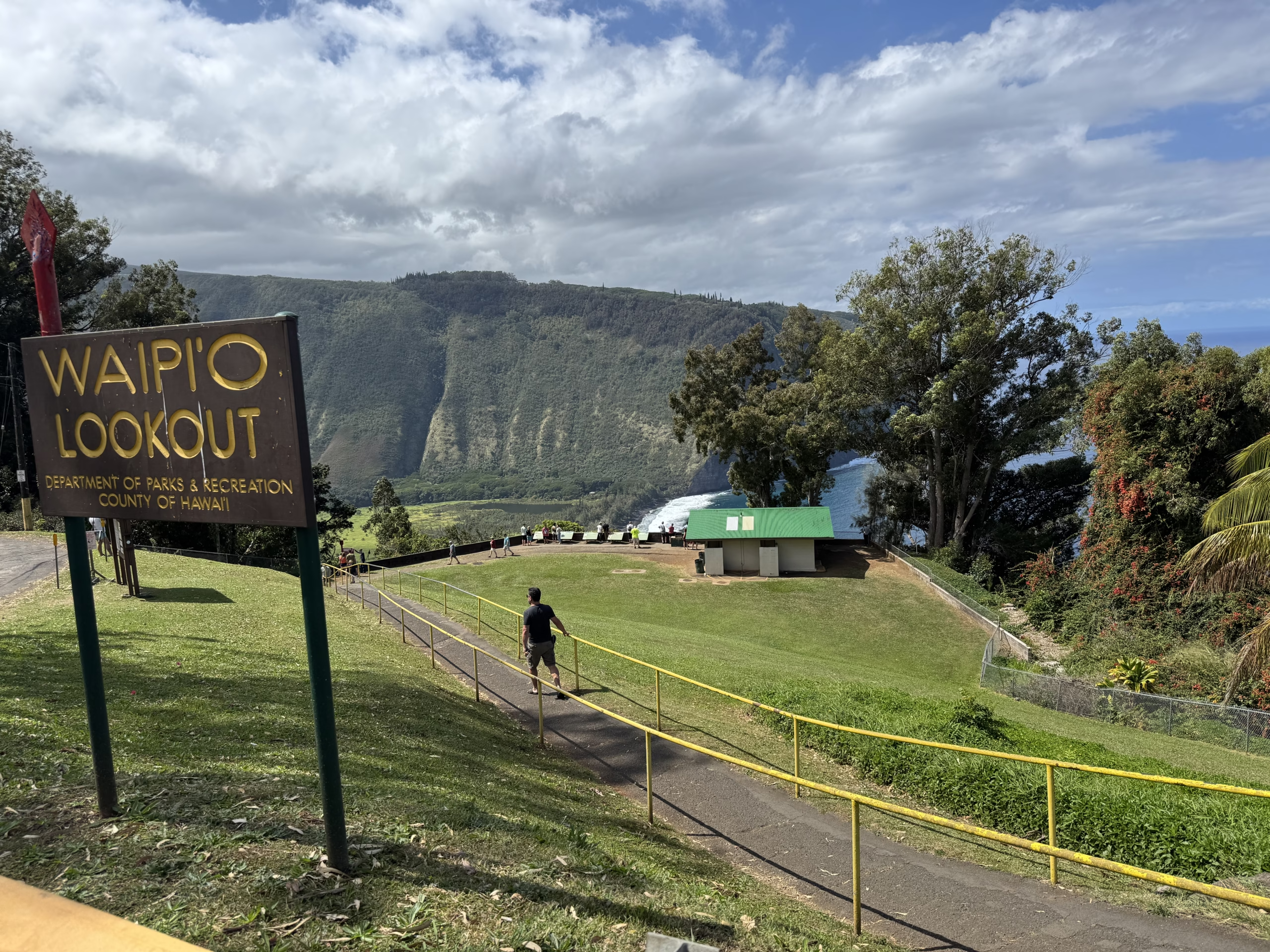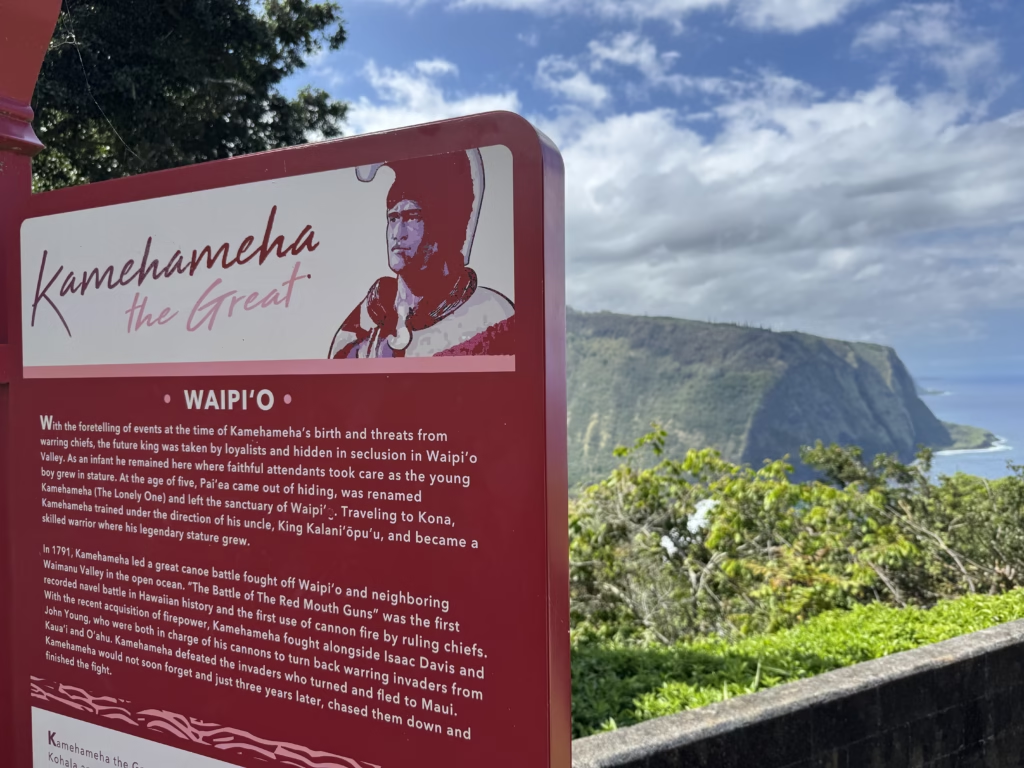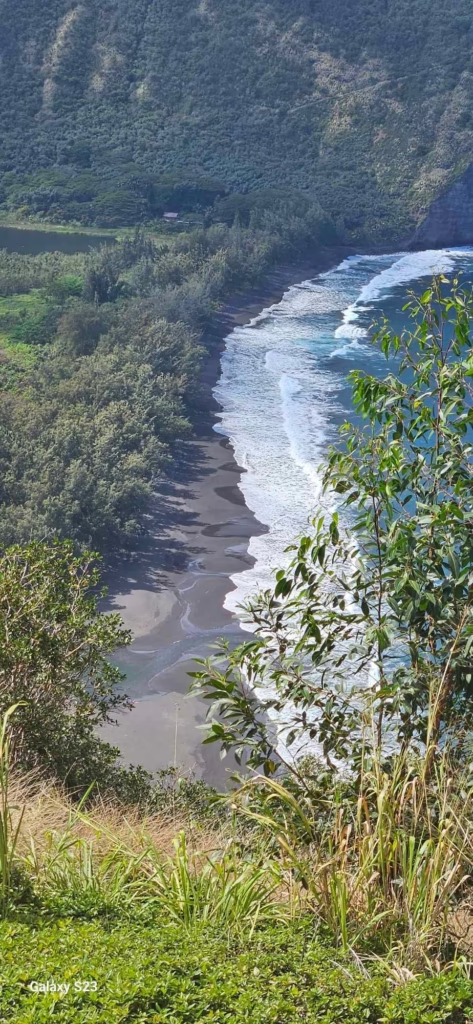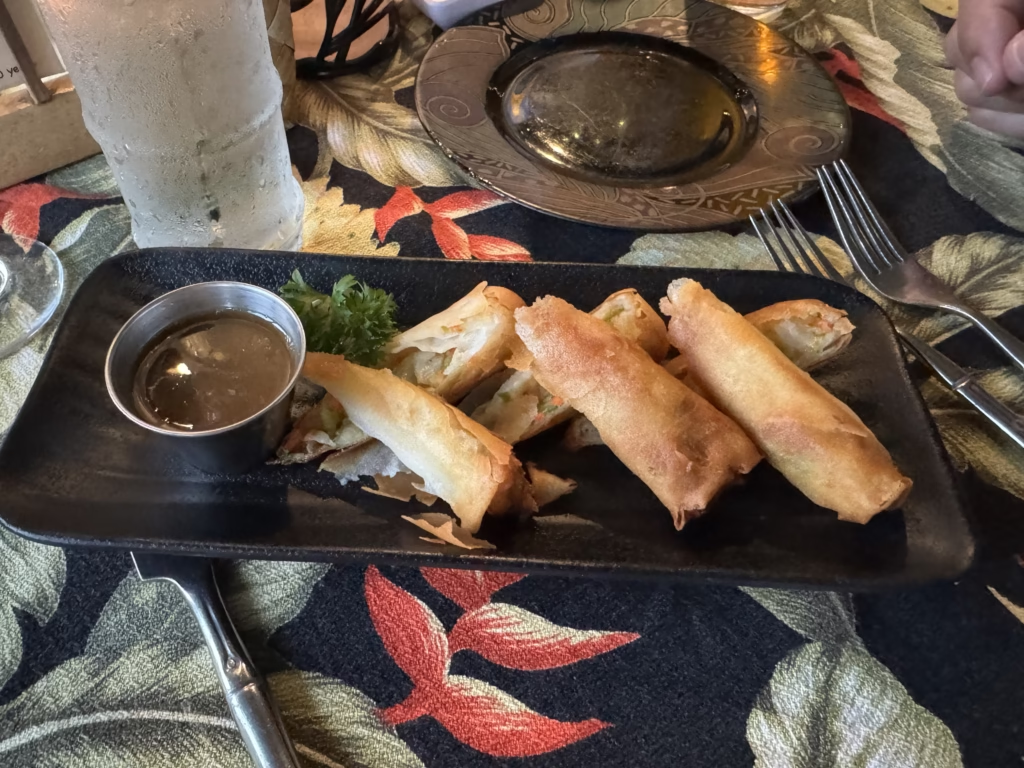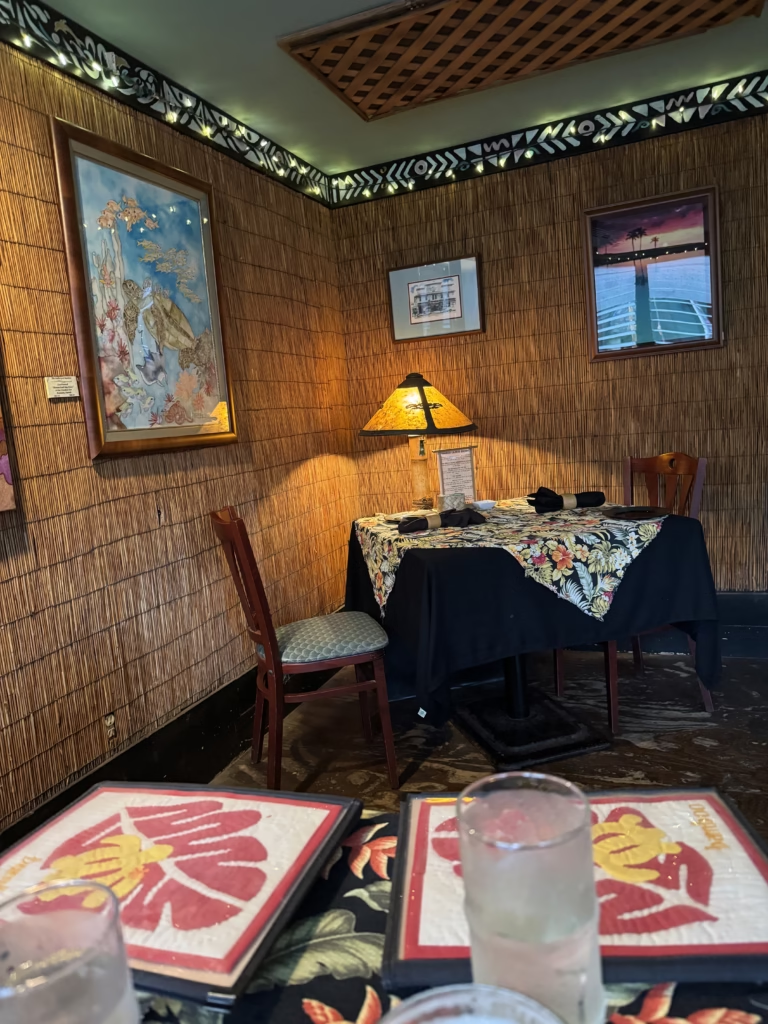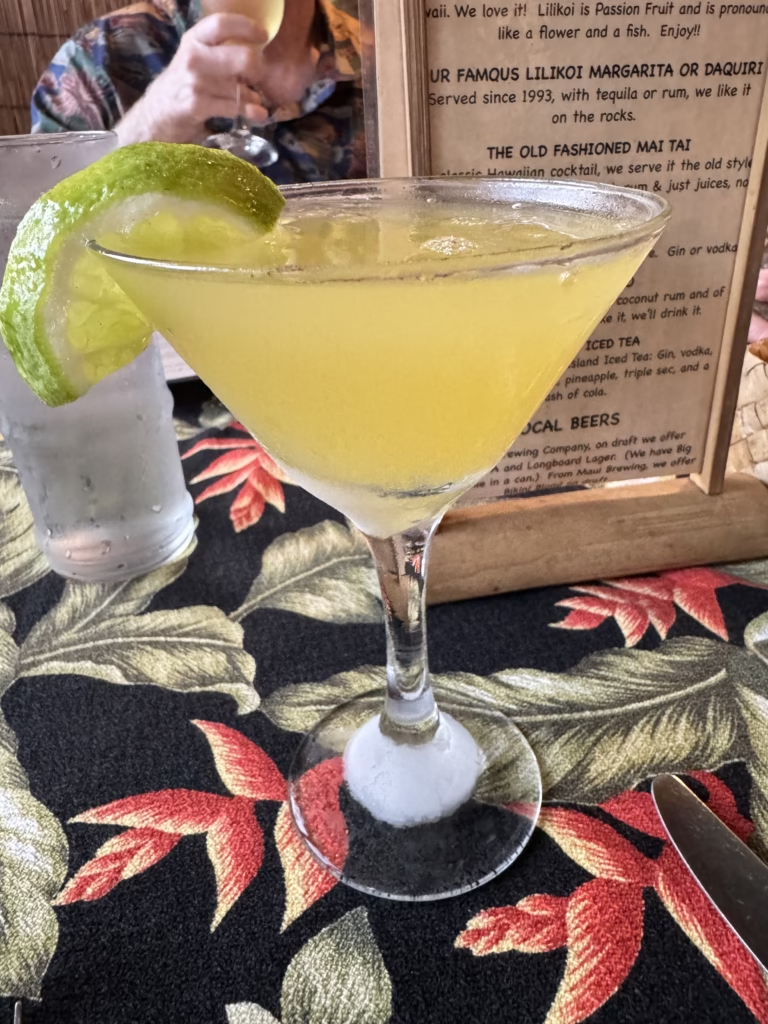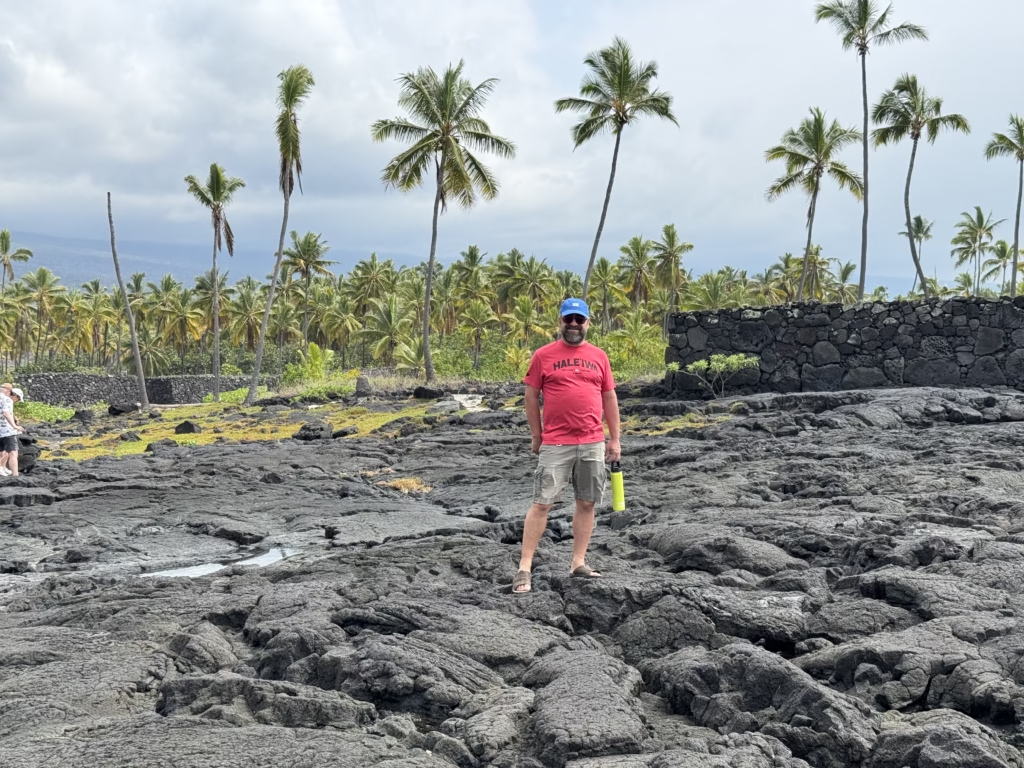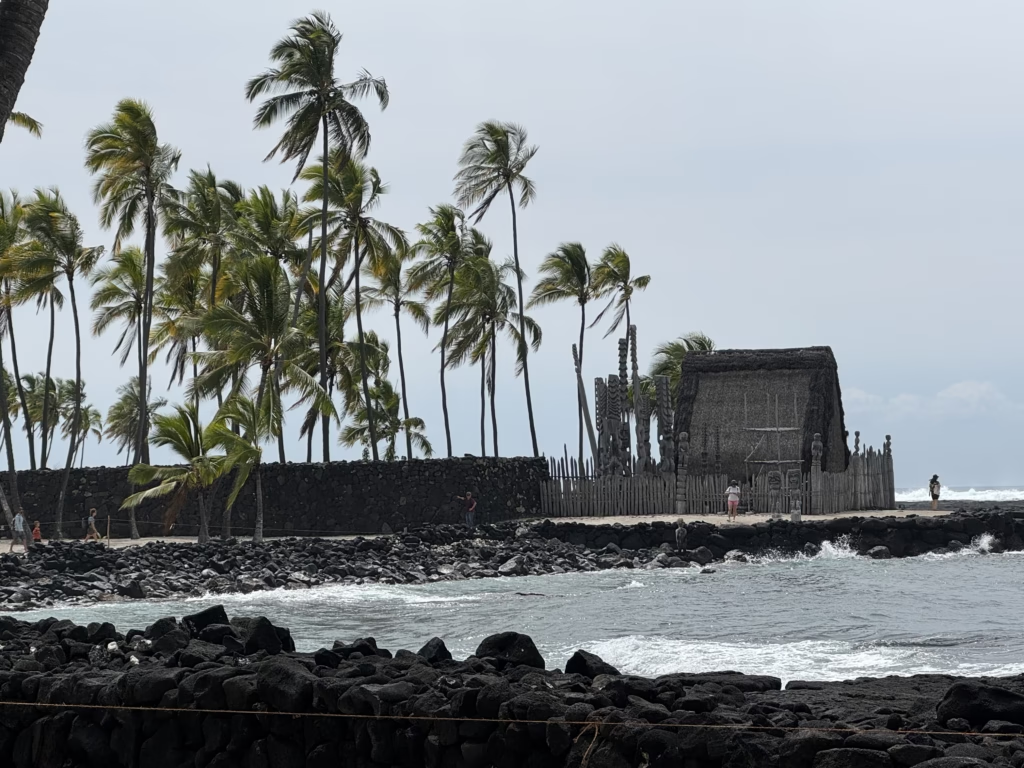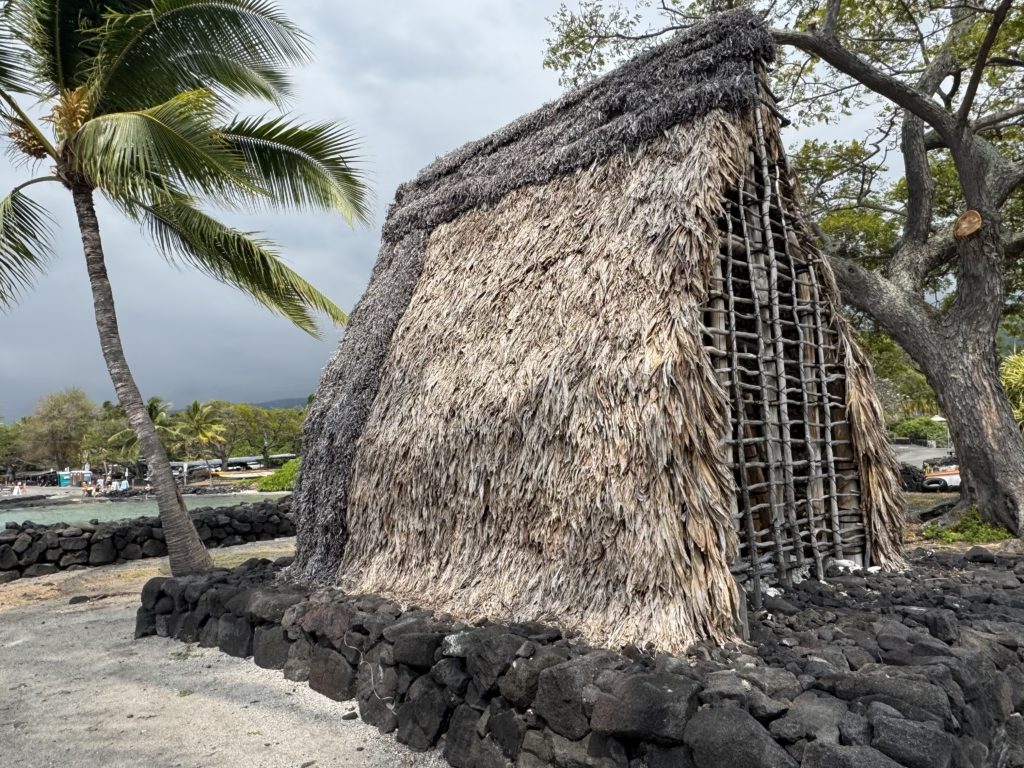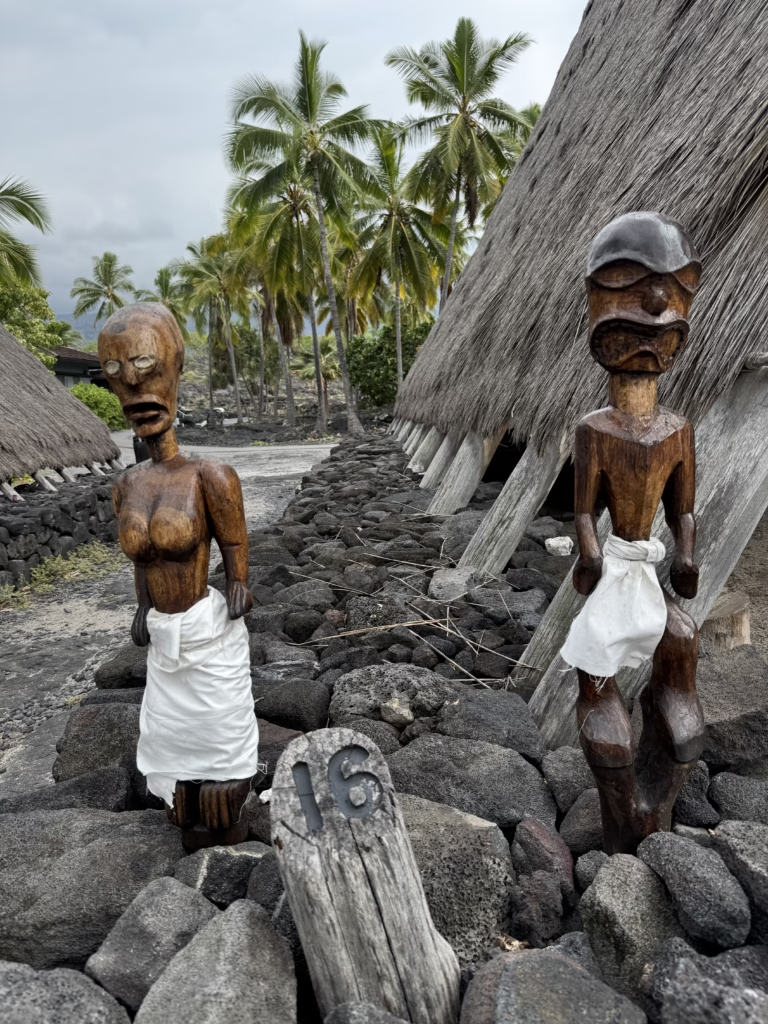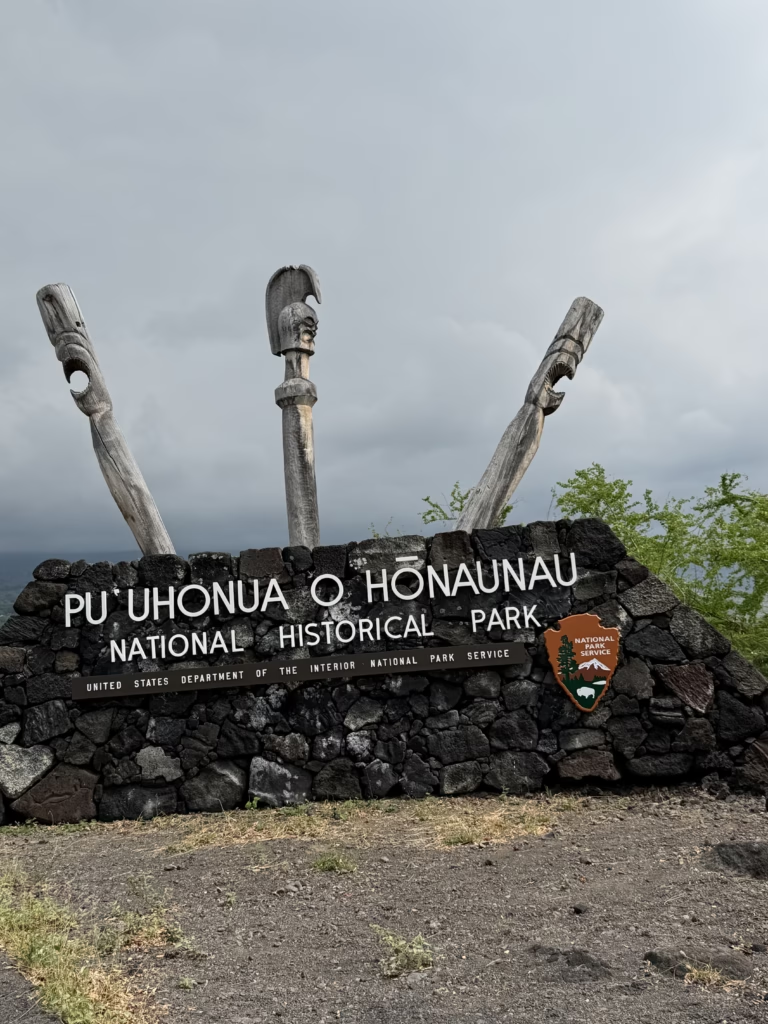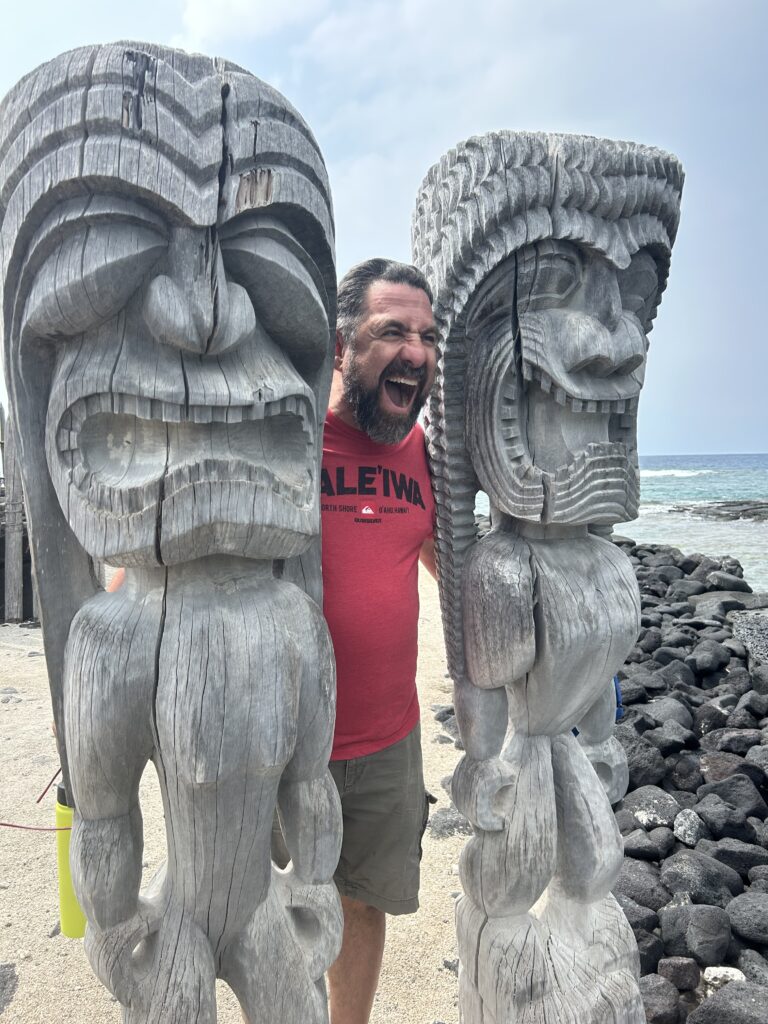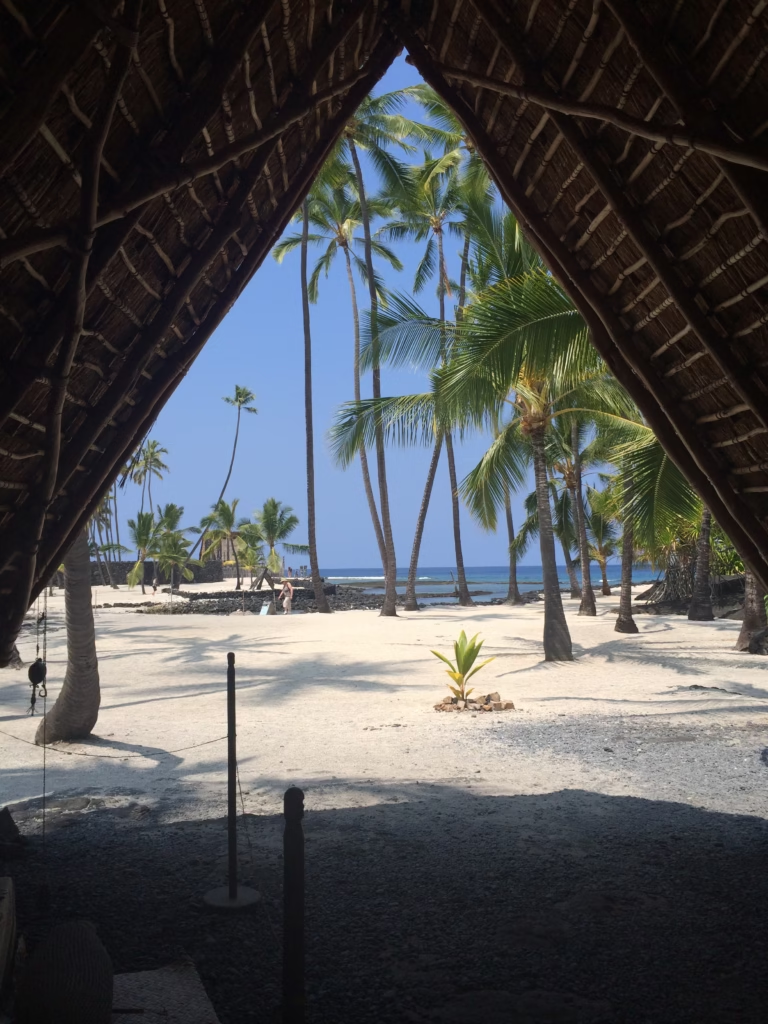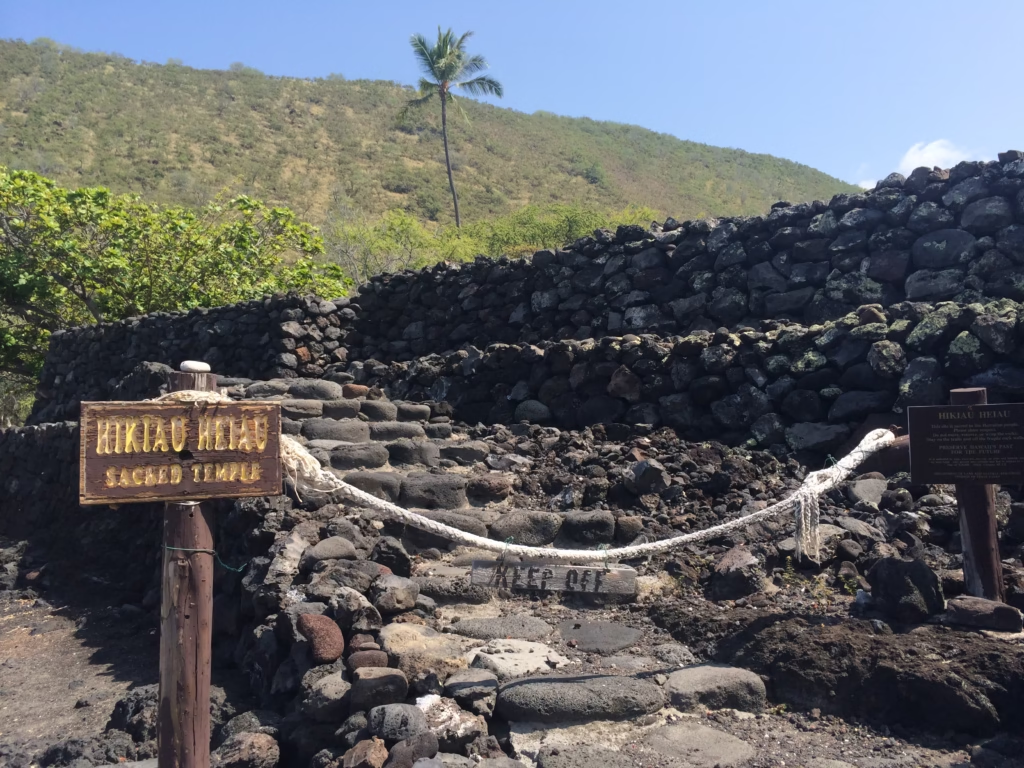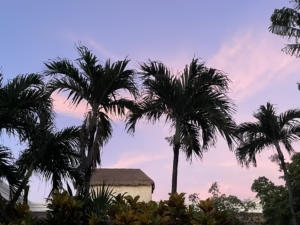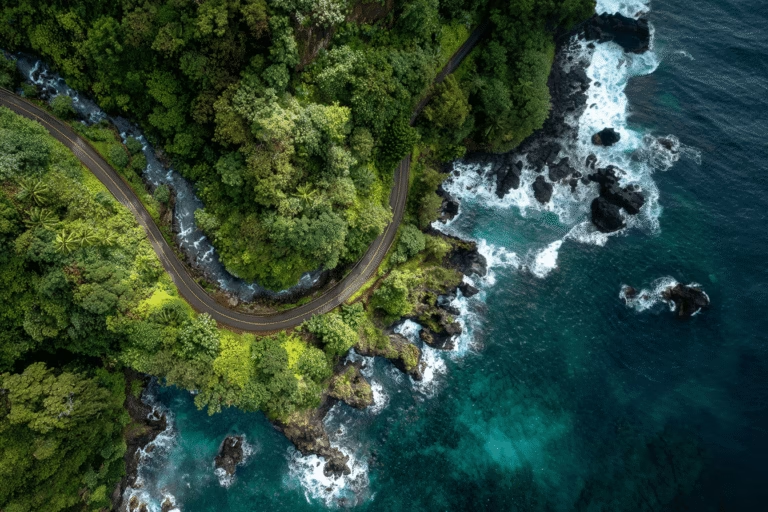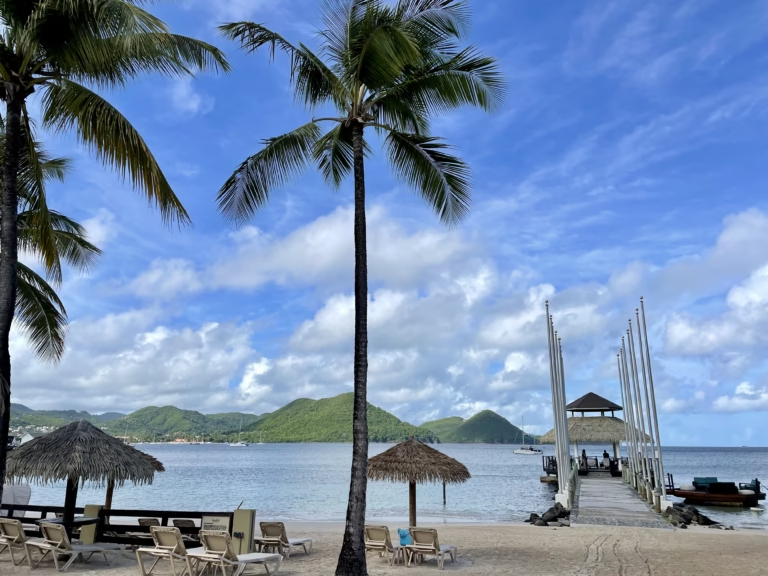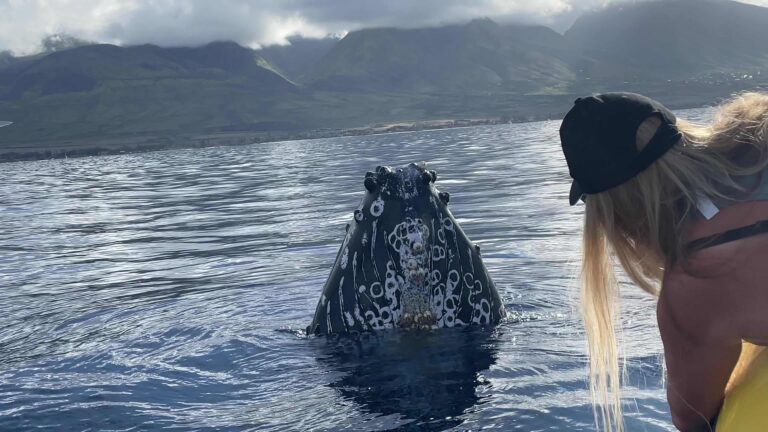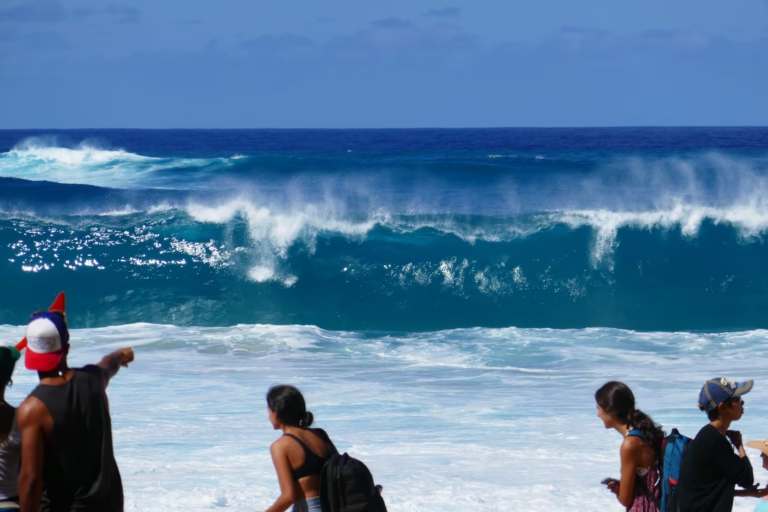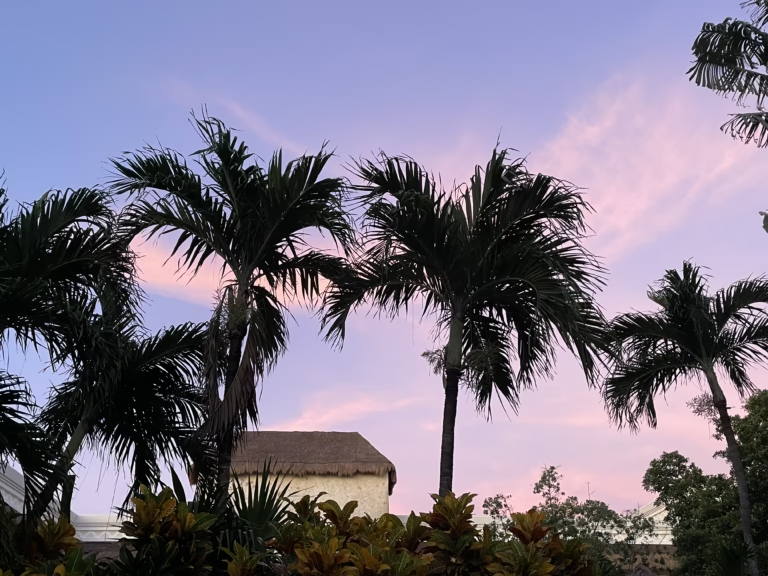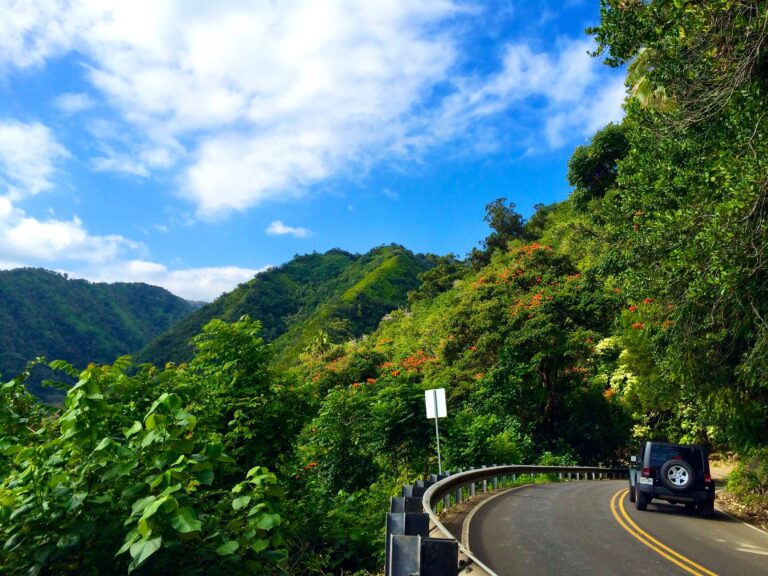Best Things to Do on the Big Island of Hawaii: Our Top Experiences
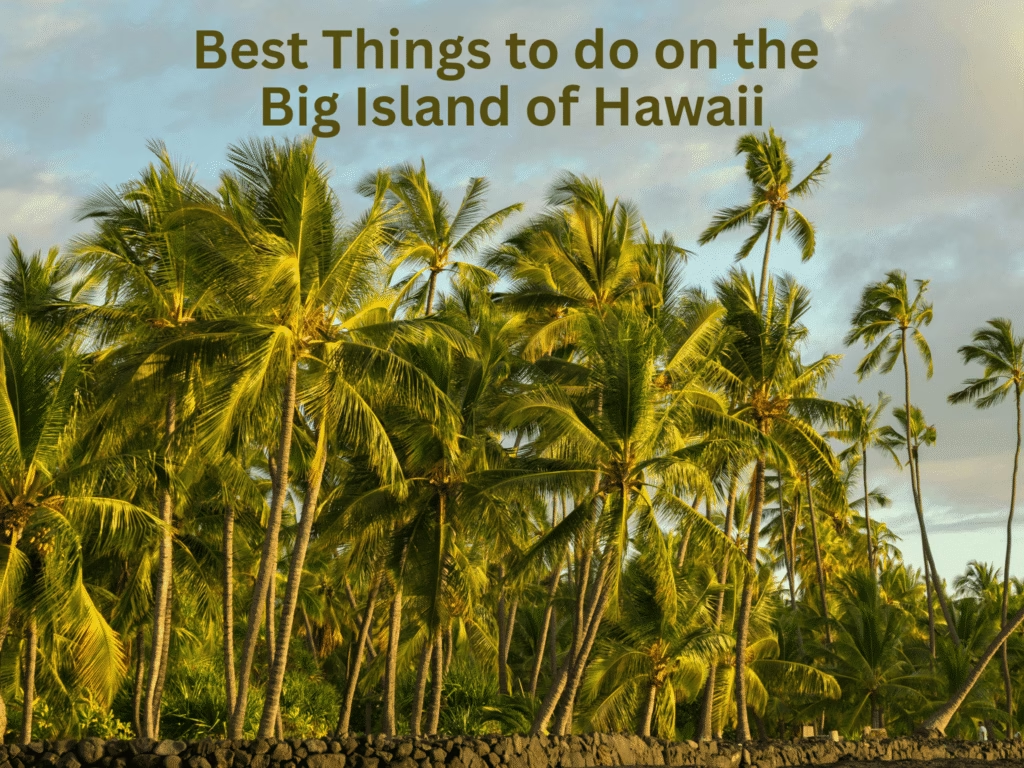
Why the Big Island Should Be on Your Hawaii Bucket List
Unique landscapes and natural beauty
Hawaii Island, affectionately referred to as the “Big Island,” is, in my humble opinion, one of the underrated Hawaiian Islands. From the moment you land at Kona International Airport, it almost feels like outer space. Black lava rocks cover the ground in piles around the airport, with occasional palm trees popping up. There is a great variety of landscapes here, ranging from volcanoes and waterfalls to rainforests and the green pastures of Waimea.
Cultural and historic highlights
Hawaii Island is also full of history. The Puʻuhonua o Hōnaunau National Historical Park is a sacred site for the Hawaiian people. It was once the home of royal grounds and a place of refuge for ancient Hawaiian lawbreakers. Kamehameha the Great was born in Kohala and, after conquering the island of Hawaii, famously unified the Hawaiian Kingdom. Pele, the volcano goddess, resides in the Kilauea Volcano at Hawaii Volcanoes National Park.
Be sure to explore the best things to do on the Big Island during your visit.
Explore Hawaii Volcanoes National Park
Kilauea and Mauna Loa volcanoes
Kilauea and Mauna Loa are two of the world’s most active volcanoes. I have been here twice, and both times I have seen eruptions. Kilauea has been active throughout 2025. Although I missed one of the big displays this year by a week or so, there was still activity. At night, we could see the lava flow from the visitor center after it got dark. Even if there is no eruption happening, it is still worth the trip because there is so much scenery and hiking to do at any time.
A two-year construction period began at the end of 2024. The visitor center moved temporarily to Kilauea Military Camp, which is located in the park. The Jagger Museum is closed permanently now.
With the volcanoes being so active, conditions can change here rapidly. It is worth checking the National Park Service website in advance, as well as talking to park rangers to get advice on any hiking trails you wish to complete.
The park entrance fee is $30 per vehicle. Due to what I think are federal budget cuts, there were no rangers at the park entrance. Instead, they had payment kiosks that visitors could use. The park is open 24 hours and can get crowded at night during eruption periods. Some areas of the park are extremely difficult to find parking in, such as the Thurston Lava Tube. Consider going earlier or later in the day if that is the case during your visit.
The Chain of Craters road will take you through the park all the way to the ocean. It is a scenic 20-mile route with plenty of trails and lookout points to stop at along the way. Prepare in advance, as there are no spots for gas or food stops on this road. There are porta-potty toilets at the very end of the road.
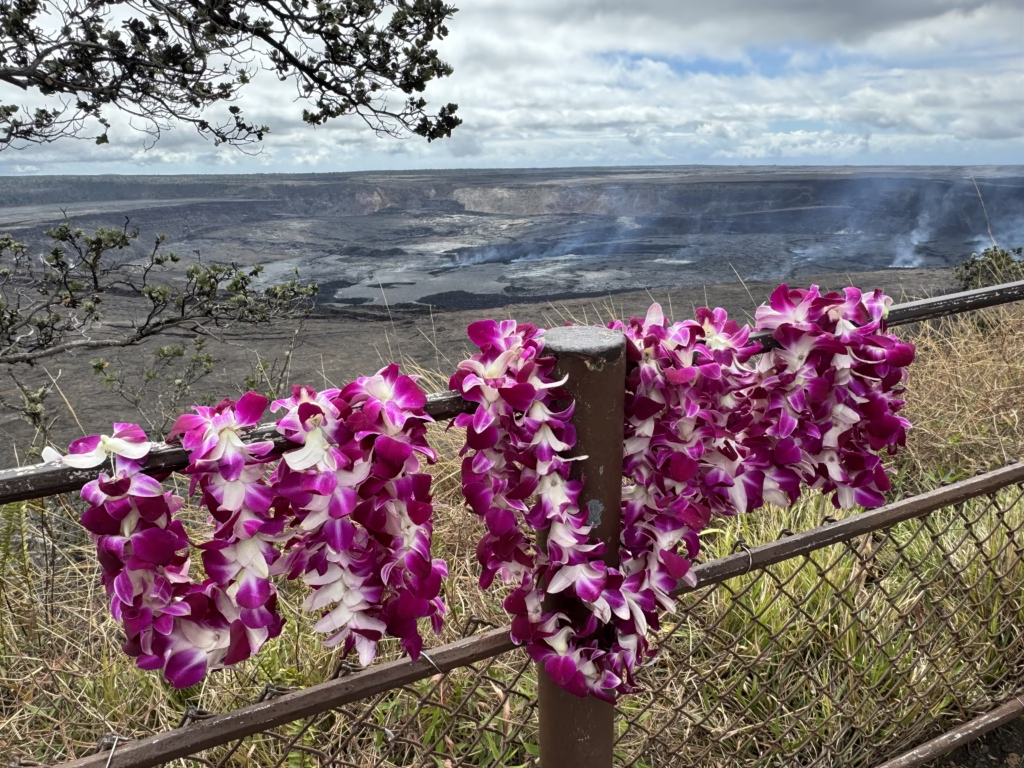
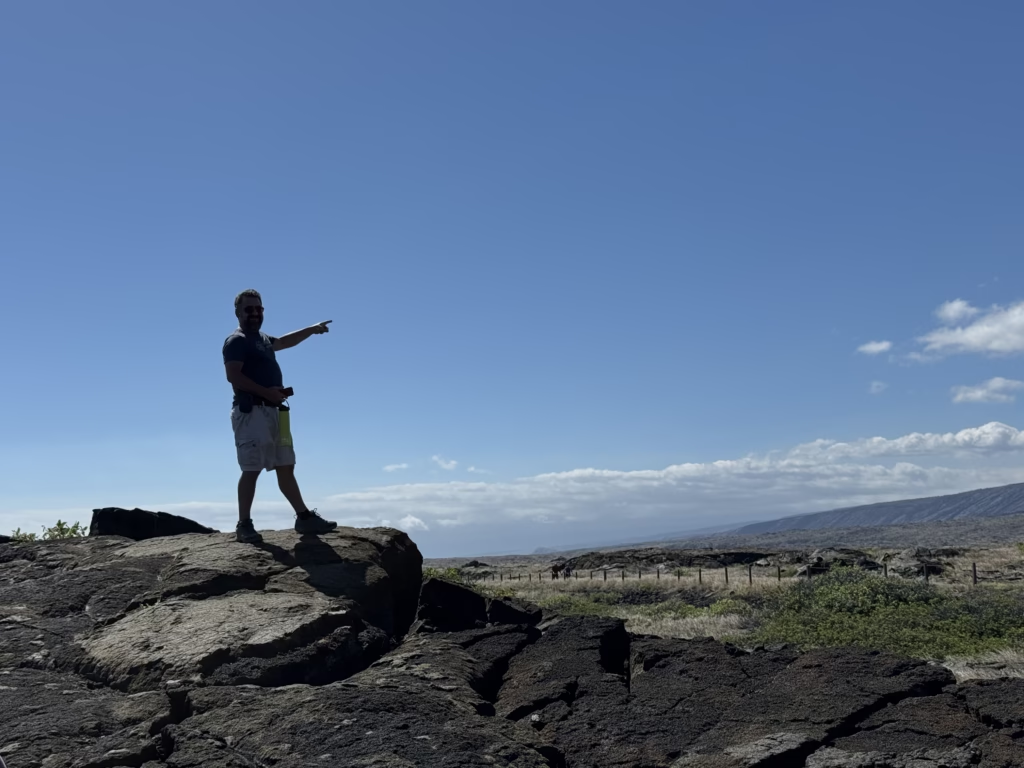
Hiking trails and lava landscapes
Before going on any hikes, check in with the rangers to ensure that you will have the time and ability to see what you want that day. Areas can be closed due to eruptions or construction.
Conditions can change, so wear appropriate clothing, dress in layers, and bring water and sun protection. I hiked here once wearing flip flops, and I do not recommend doing that! The last time I went, I wore my Hoka hiking shoes, and I was much happier with that choice.
Crater Rim Trail is accessible from many places and is a great spot to walk along a paved trail and view the volcano’s floor. It is considered an easy trail and is mostly flat. It is accessible from different spots: the Steam Vents, Volcano House, and Kilauea Overlook.
The Ha’akulamanu (Sulphur Banks) Trail is another easy trail that is 1.2 mi (2km) round trip. It starts at the steam vents parking area. There is also an area adjacent to the parking lot where steam vents are located, allowing visitors to access it regardless of their physical abilities. This area smells like rotten eggs and can be uncomfortable for those with respiratory illnesses.
Puʻuloa Petroglyphs is a moderately challenging trail, which is also much windier and sunnier. The trail length is 1.4 miles (2.25 km) round trip. It is located towards the end of the Chain of Craters road. The trail itself is a rocky lava field with trail markers located along the way. When you reach the end of the trail, there is a boardwalk you climb on to. The boardwalk has a circular path that takes you along the petroglyphs so you do not disturb them.
Nahuku (Thurston Lava Tube) is another popular trail with limited parking. This is another moderate trail. The distance is 1.5 mi (2.4 km) round-trip walk from Kilauea Iki Overlook, although longer options exist as well. The lava tube is lit from 8 am to 8 pm. It still might be too dark for some people. Hiking outside those hours, a flashlight will be necessary as well. This is an extremely interesting trail to walk through. It has a rainforest climate right on top of the volcano. It is called a lava tube because it was once where a river of lava flowed.
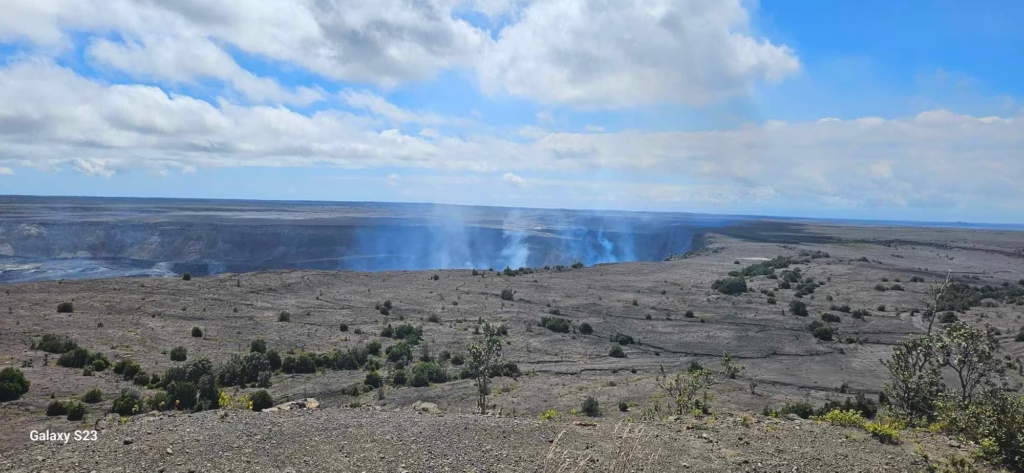
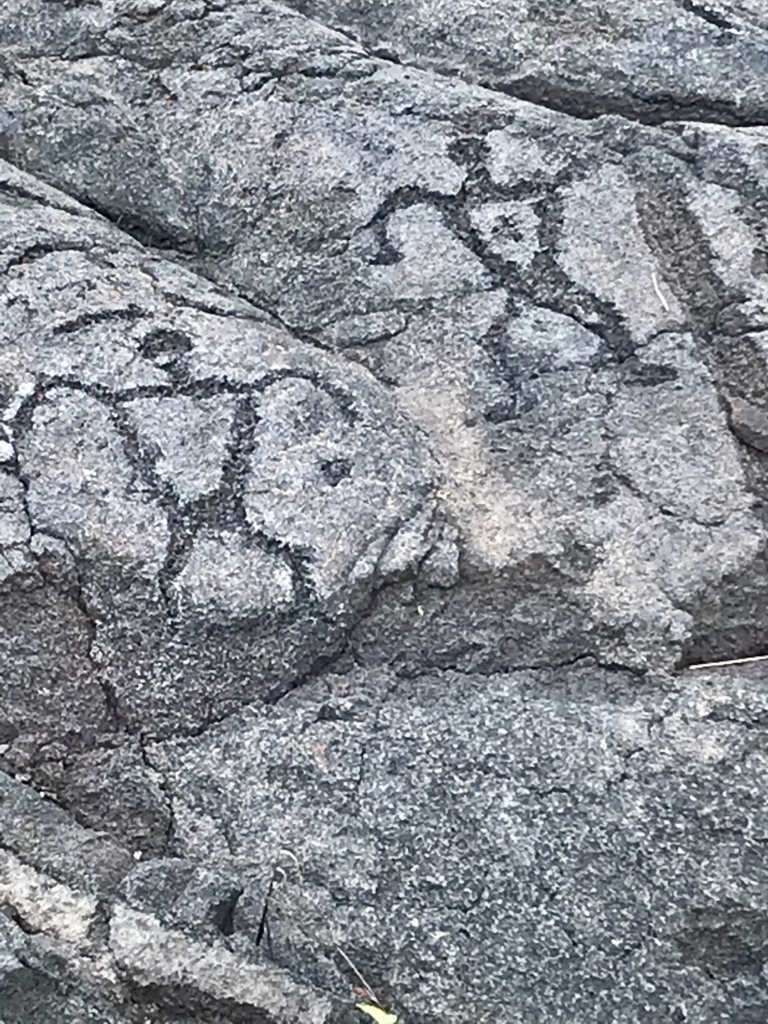
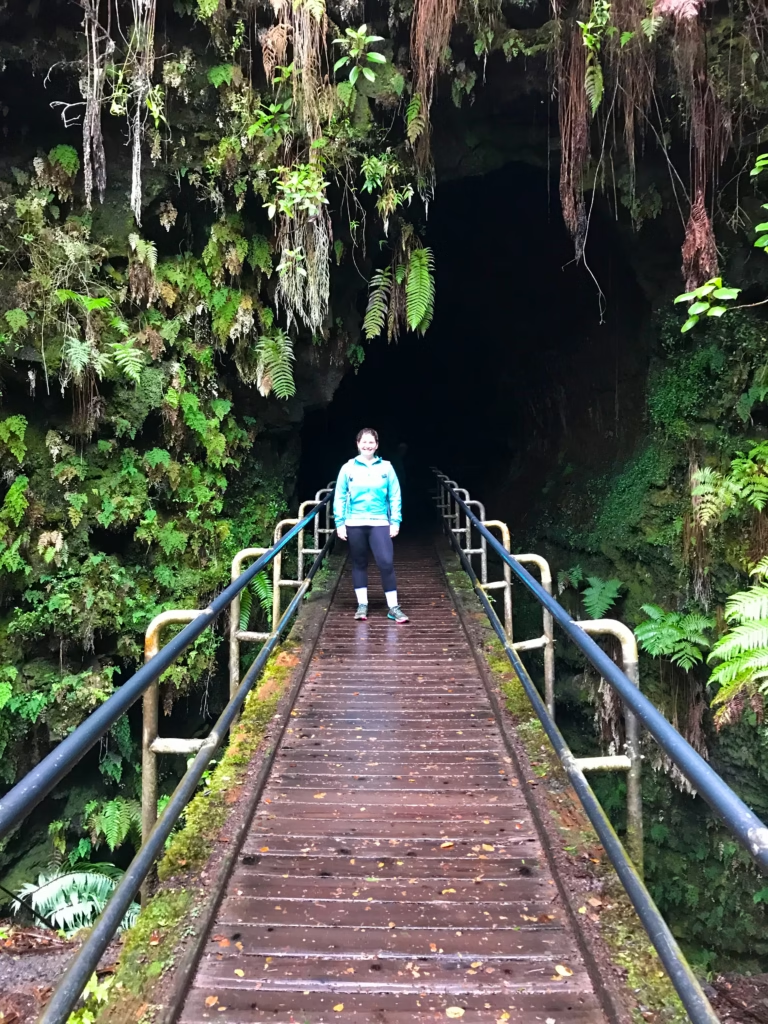
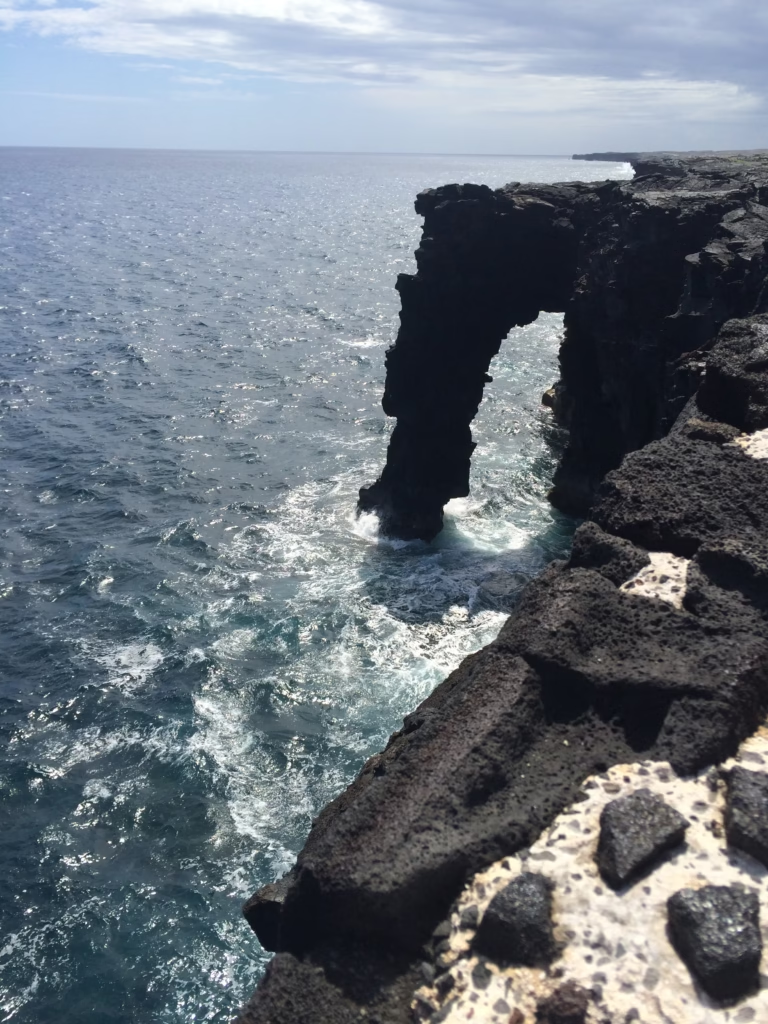
Restaurants Near Hawaii Volcanoes National Park
Even if you do not stay here overnight, which I recommend you do, you can spend a full day hiking and exploring here. There are two excellent restaurants nearby that you can visit after your day.
The first restaurant is located directly in the Hawaii Volcanoes National Park. The Rim at Volcano House is an excellent restaurant directly on the summit of Kilauea. Reservations are required for dinner. Volcano House is also a hotel and operates campsites. It is located fairly close to the park entrance along Crater Rim Drive West.
There is live music in the restaurant at night. It is usually a local musician adding to the ambience. The restaurant caters to different dietary needs. There were a few vegetarian options for me and plenty of meat, seafood, and pasta. After dinner, you can walk out along the rim. This is where we saw the volcano lit up at night!
My second recommendation is a short drive away in the town of Volcano. The Kilauea Lodge and Restaurant has a cozy dining room with a large fireplace. The food and drinks here were excellent! They had vegetarian and vegan options and created their menu with local ingredients. The waitstaff here were very friendly. Also, there is a small gift shop right off the dining room where you can buy some souvenirs from local artisans.
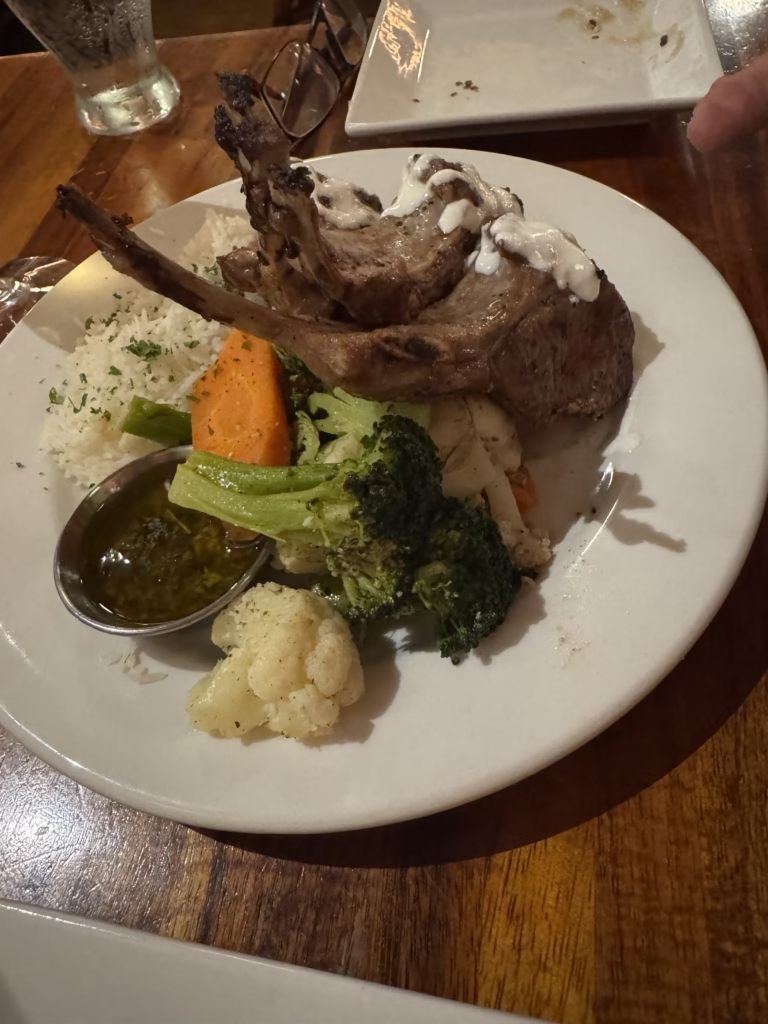
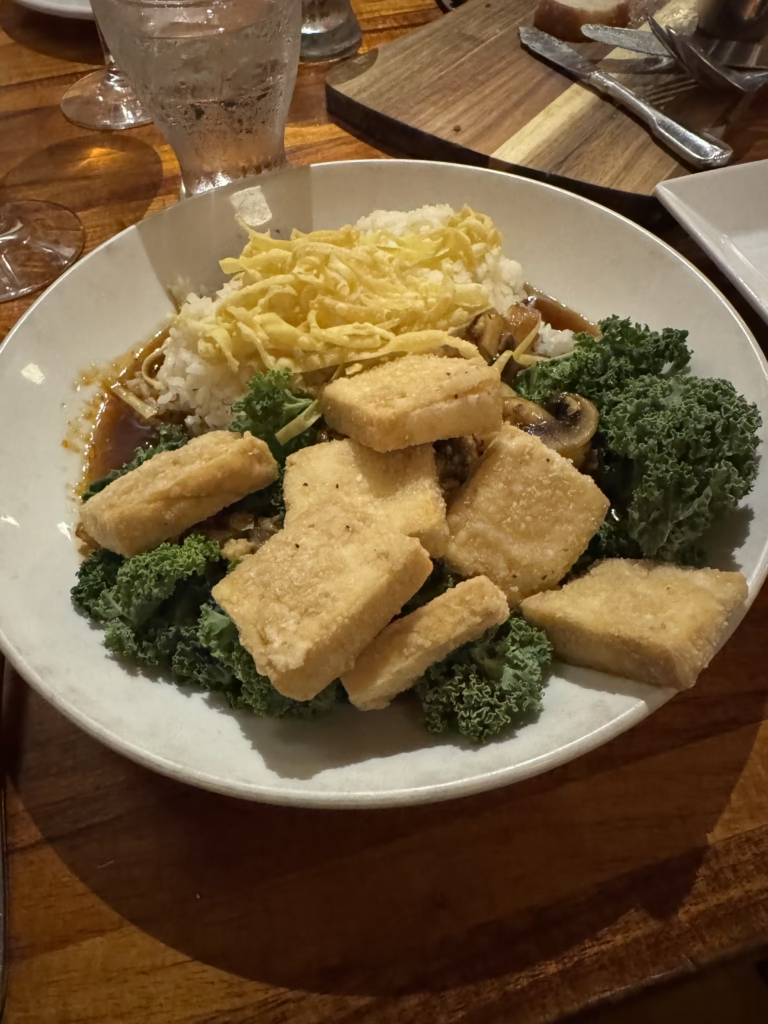
Visit Akaka Falls State Park
The iconic 442-foot waterfall
In my opinion, this is the best waterfall to see in all of the Hawaiian Islands. It’s easy to access, relatively uncrowded, and accessible via a short paved loop trail. Akaka Falls is about 11 miles north of Hilo. There is a parking lot with plenty of paid parking ($10). There is also parking outside the main parking lot. The entrance fee to the park is $5 per person for non-residents. The entrance is staffed with personnel who can answer questions, as well as provide access to restrooms.
Easy walking paths through lush rainforest
The loop trail begins with a set of stairs going down. It does not matter which way you start, as you will end up at the same place. Both ways will have a gradual decline and then incline back to the parking lot. We started by going towards the left to begin the loop. The trail itself is a .5 mile loop. There is plenty of shade as you walk through this rainforest trail. Because of the climate, there may be rain and mosquitoes, so it is best to plan accordingly and bring a rain jacket and bug spray.
Once you get down to the waterfall, there are plenty of vantage points for pictures and videos. There is a railing along the path as well, so it is very safe. Along the trail, you can see bamboo, orchids, and flora. It is worth a trip here for both young and old.
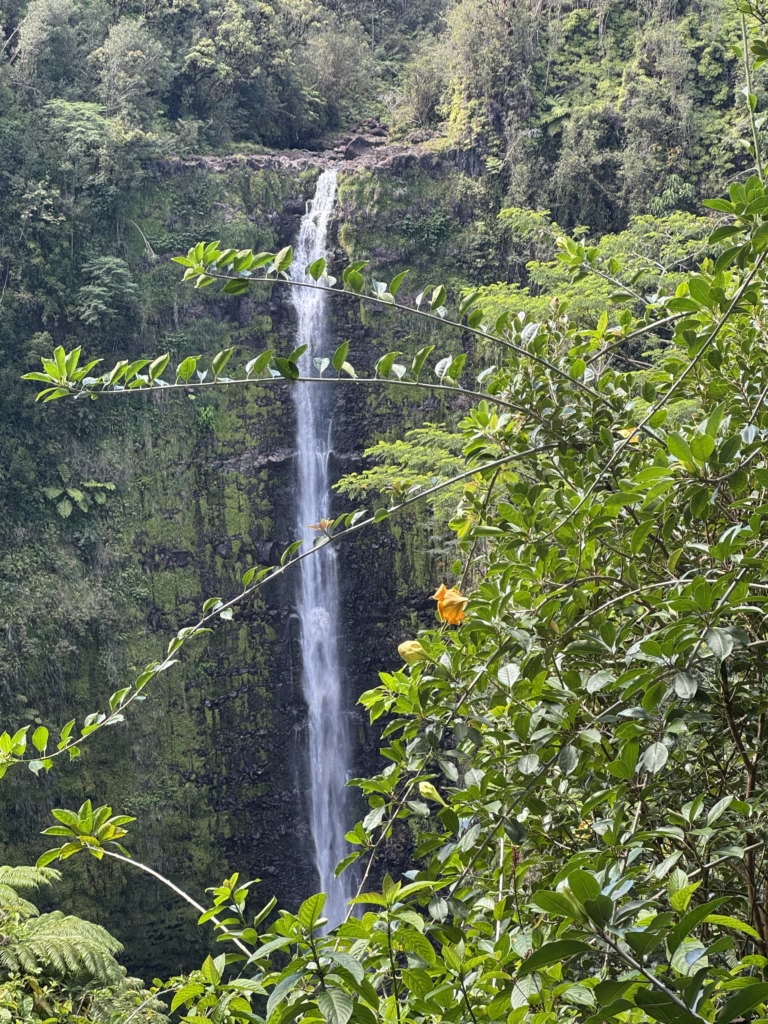
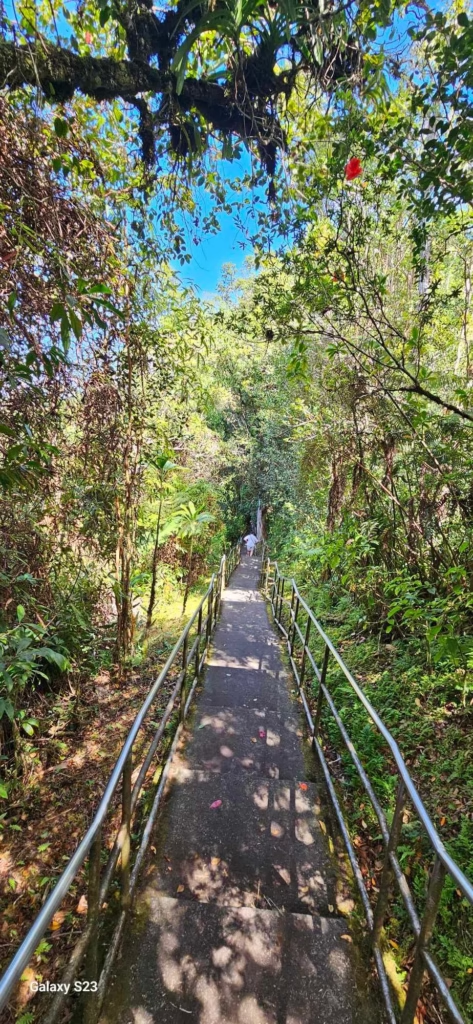
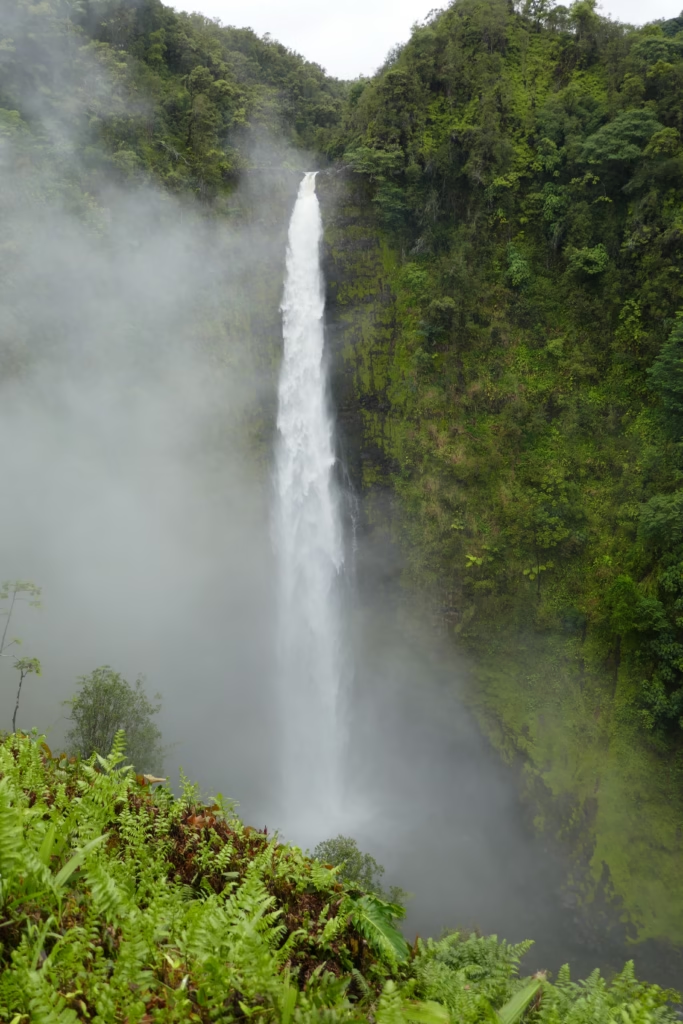
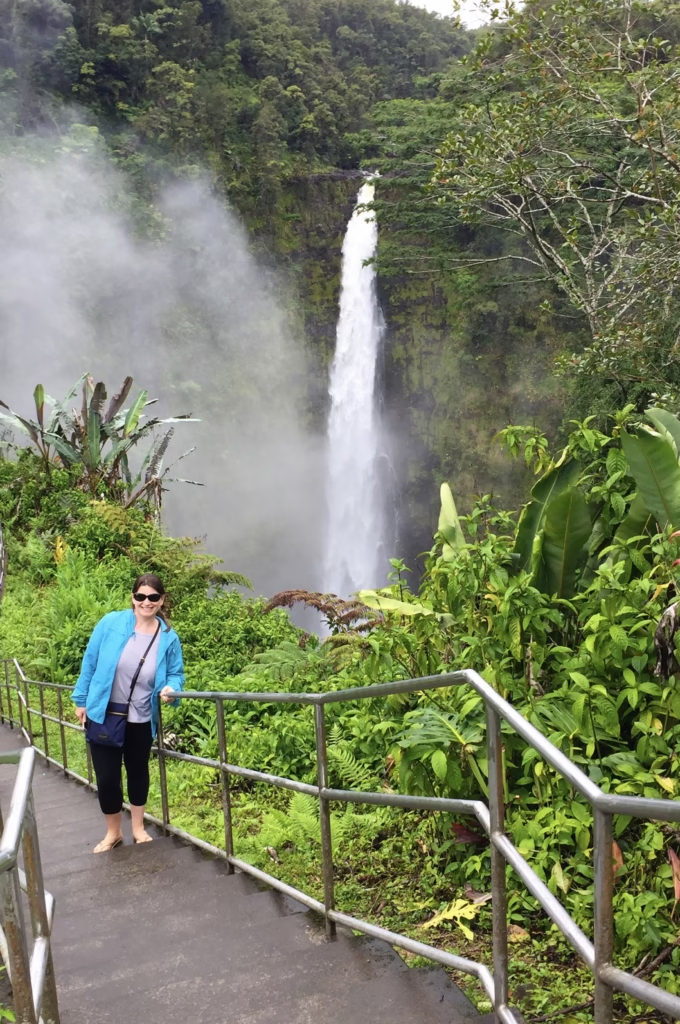
Take in the Views at Waipio Valley Lookout
Scenic drive from Akaka Falls to Waipio Valley
Driving from Akaka Falls to the Waipio Valley lookout is a scenic, beautiful drive. The drive takes about an hour. You will drive along the Hawaii Belt Road, also known as Mamalahoa Highway 19. Much of the ride is high up, overlooking the ocean and hills from the east to the north of the Hawaiian island.
The dramatic cliffs and taro fields
Once arriving at Waipio Valley, there is a large parking lot and a viewpoint area. When we were there, there was a ranger or volunteer on duty who was very friendly and talked to us quite a bit. The road down to the bottom of the valley is open to Native Hawaiians only. This is a sacred place for Hawaiians. It was the boyhood home of King Kamehameha I.
From the top, you can see the taro fields, dramatic cliffs, and black sand beach. A short walk to the lookout, and you can see the towering cliffs and even people on the beach in the valley below. There are picnic tables and restrooms, and some signs. This is a quick stop of probably no more than half an hour, but it is absolutely worth it for the cultural significance and the scenery.
Discover the Charm of Hawi Town
Drive along the Kohala Coast
Hawi Town is located on the Kohala Coast, which is the northwest peninsula of the island of Hawaii. It is a short drive north from the Waikoloa area, where many condos and hotels are located.
You can keep going along the road to Kapa’au and visit the original Kamehameha Statue in front of the old Kapa’au courthouse. It was actually recovered from the bottom of the ocean after it sank in 1880. This is a quick stop with a photo op and a chance to stretch your legs, as the Big Island is indeed large and scenic spots can be quite spread out.
Then at the end of the road, you can see the Pololu Valley lookout. There is a very small parking lot at this scenic lookout where you can take in cliffs and dramatic coastline. You are allowed to hike down to the bottom, but just remember your physical fitness level before you attempt that.
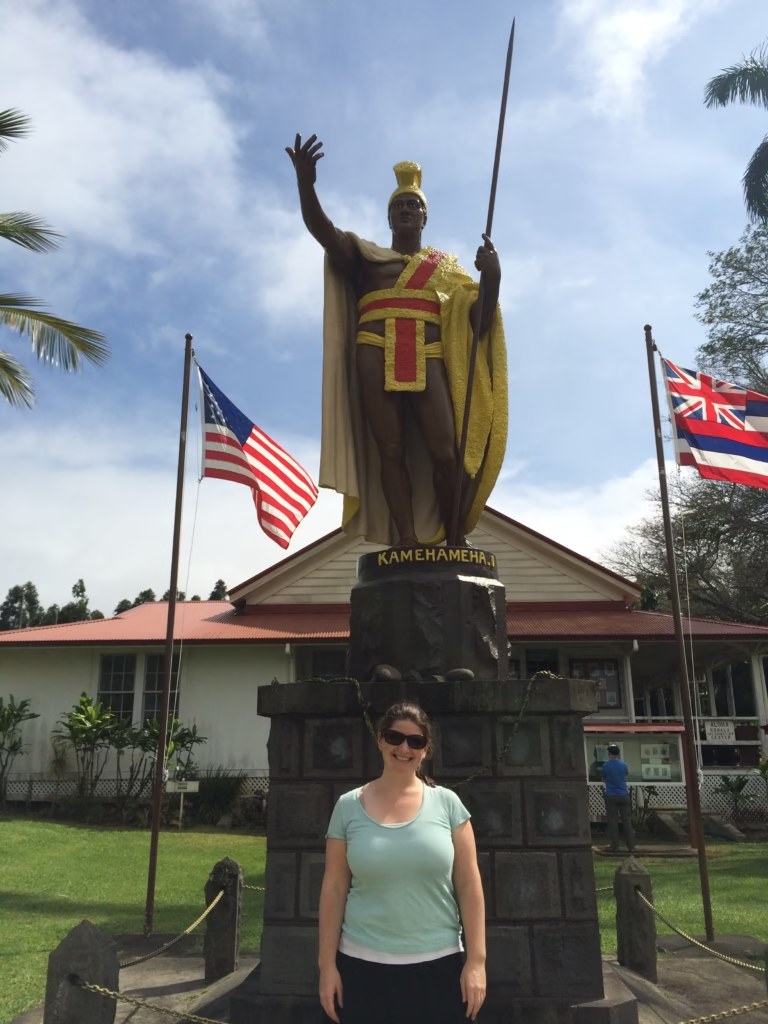
Historical significance and laid-back vibe
Many of the historic buildings in this town are old plantation buildings and are now art galleries and restaurants. This town has an old Hawaii laid-back vibe that is a breath of fresh air coming from larger, more touristy areas.
Bamboo Restaurant (which also has an art gallery shop) is a must-visit in Hawi Town. Bamboo is known for its Pacific Rim menu. They only serve dinner on Thursdays now, which requires a reservation. They are also open for lunch every day except Mondays.
The menu has an assortment of pupus (appetizers), salads, and entrees. The “lili-tini”, which is the lilikoi martini, is a must-have. They have plenty of vegetarian options here as well, which I do appreciate. For dessert, they came around and offered small bites of their desserts, which we all chose so we could taste them. You can also order them full-size if you wish, but we were full from our delicious pupus and meal.
Also worth checking out while you are in town: Hawi Coffee Company and As Hawi Turns boutique. Hawi Coffee Company not only has coffee and breakfast but is also a great place for an afternoon ice cream. As Hawi Turns is an eclectic gift shop and thrift store.
Step Back in Time at Puʻuhonua o Hōnaunau National Historical Park
Ancient Hawaiian culture and sacred grounds
Puʻuhonua o Hōnaunau is run by the National Park Service. This is a short drive from the Kona area and can be completed in a couple of hours. The drive from Kona takes about 30 minutes. Again, there was no staff at the entrance the last time I visited, so it was self-park and pay. There were staff inside the visitors center and gift shop. The fee is $20 per vehicle.
Puʻuhonua, “a place of refuge,” is where ancient Hawaiians who broke the kapu or sacred laws were able to absolve their sins and return to society. It is another sacred place for Hawaiians that should be respected.
The nearby royal grounds were also home to Hawaiian ali’i (royals). There are also cultural practitioners here demonstrating traditional skills in the hālau, which is the thatched structure near the grounds.
What you’ll see and learn on your visit
There have been no talks or tours, so this site is something you can explore on your own and take about an hour or more, depending on how many stops you want to make. You can start near the visitor center, where a video plays on repeat.
You can grab a park map, which shows numbered markers along the trail to learn about each stop and its significance. This self-guided tour is the only way to take in the park, although there are occasionally scheduled ranger talks. The trail itself is about .5 miles and an easy stroll. There is some shade from palm trees.
The Great Wall protects the Temple and Royal Grounds. It was constructed in part from lava rock, and much of the original wall is still intact today. It is over 12 feet tall, 18 feet wide, and over 950 feet long!
The Hale o Keawe Temple is guarded by wooden symbols of Hawaiian gods. It once housed the cremated bones of the King of Hawaii Island, along with other unnamed warriors.
The Puʻuhonua is where kapu breakers attempted to flee to be absolved by a priest. The ancient heiau here is one of the oldest structures on the site, and only parts of it remain today.
Tour a Kona Coffee Farm
Why Kona coffee is world-famous
The Kona area of Hawaii Island is ideal for growing coffee beans. The rich volcanic soil and the weather help coffee plants form a rich and unique flavor. The elevated slopes in the Kona district, along with sunny mornings and afternoon rainfall, help the coffee plants thrive. Consider going to a tour on the same day as the Puʻuhonua o Hōnaunau National Historical Park. The driving distances between the two and the length of each activity are an ideal combination.
Best coffee farm experiences for visitors
We toured the Greenwell Farms in Kona. They offer free tours daily from 9-3 at hour or half-hour intervals. There are no reservations required; just show up about 10 minutes before a tour is scheduled to depart. There is a short walk through the farm, and they provide umbrellas for shade or rain protection. You will learn about the history of the farm as well as coffee cultivation practices.
Back at the gift shop, you can taste coffee and purchase any of their blends that are already bagged. They also have other food items from the Big Island for purchase. You can do a tasting or drink the free samples and sit at picnic tables outside.
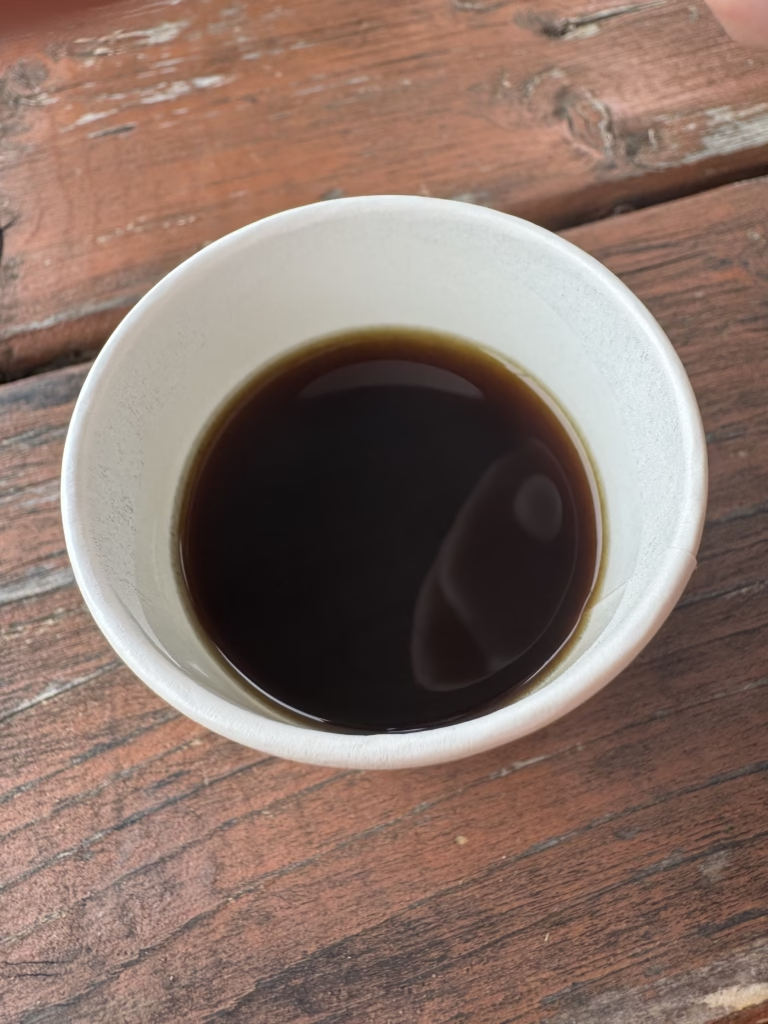
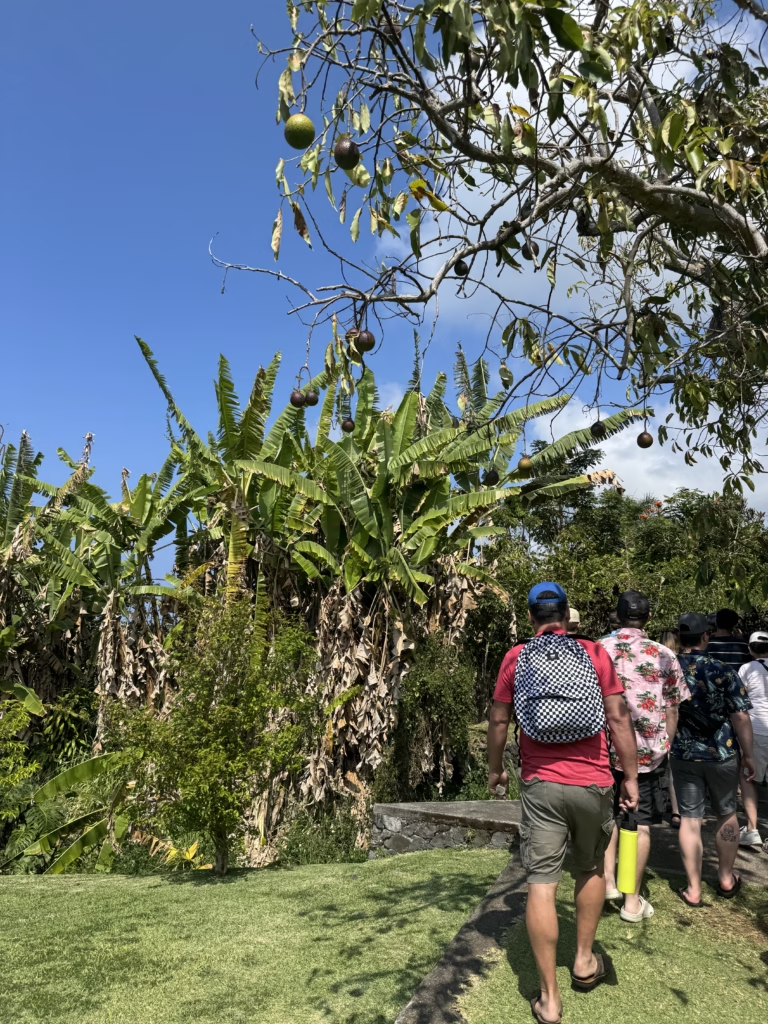
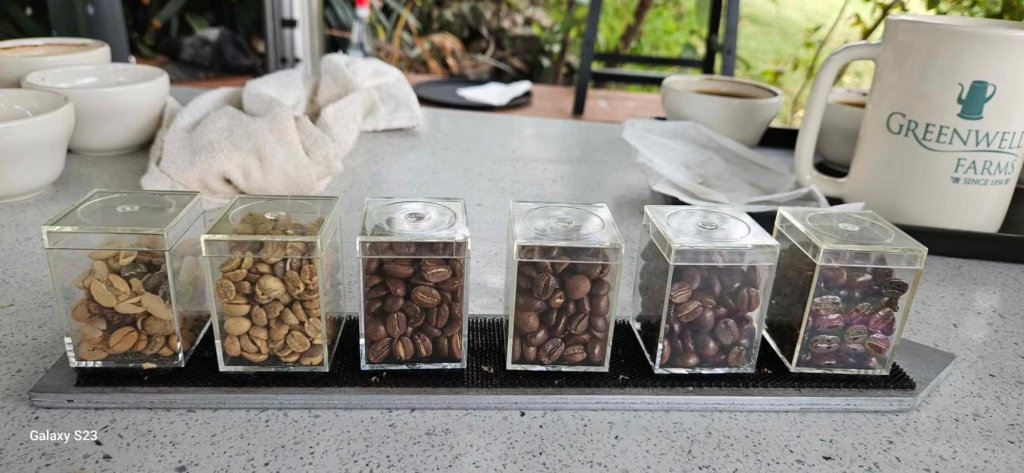
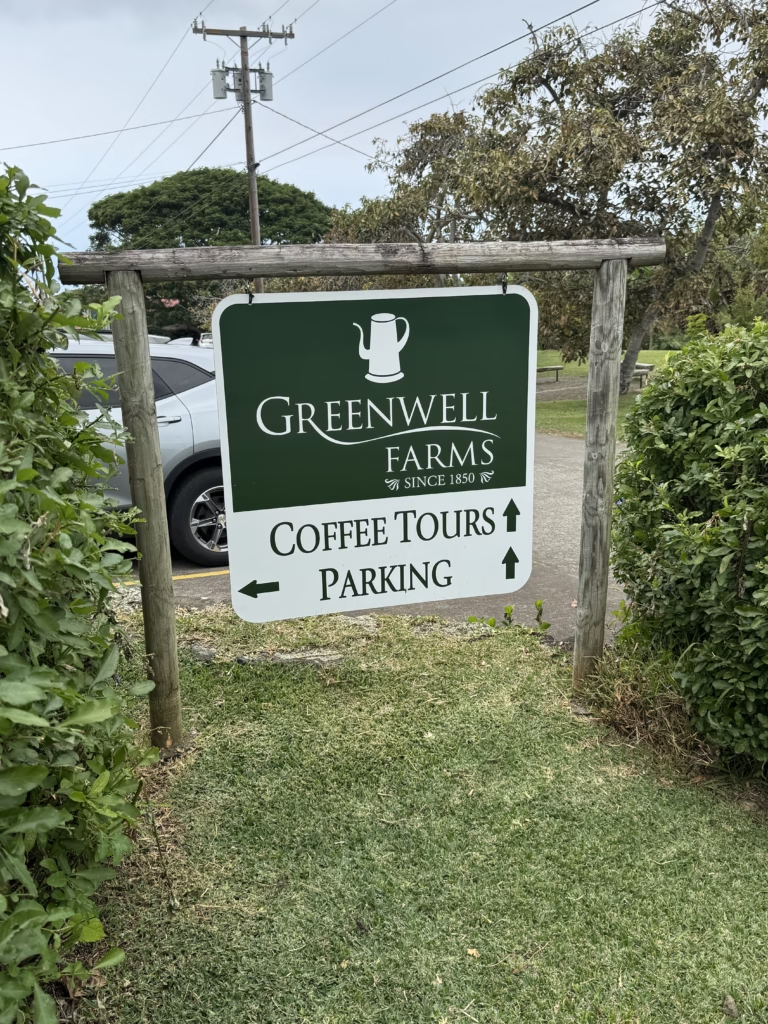
Explore the Hilo Side of the Big Island
Waterfalls, gardens, and cultural sites
Hilo, on the leeward side of the island, is a much more lush area with rainforests, lush tropical plants, and waterfalls. It is a vibrant town, but a much slower pace of living here. It is about a 45-minute drive from the Hawaii Volcanoes National Park. Hilo used to be a farming and fishing village. Now it is a charming town with many free activities.
Liliʻuokalani Gardens offers free admission. It is a traditional Japanese garden. In fact, it is the largest Japanese garden located outside of Japan. It is located along Hilo’s Banyan Drive, a scenic tree-lined street in Hilo. You can walk amongst fishponds, rock gardens, and pagodas. You will immediately feel calm strolling along the paths here.
Rainbow Falls is located in Hilo. Although not as majestic as Akaka Falls, it is easy to get here and convenient if you are already touring around the Hilo area. Rainbow Falls are about 80ft tall. There is no fee to visit the park as it is part of the Hawaii State Parks. Rainbow Falls gets its name from the colorful rainbows that form in its mist, especially in the morning.
Heading north from Hilo, you can drive the Pepe’ekeo Scenic Drive, which is only about 4 miles. Begin the drive between miles 7 and 8 on Highway 19. You will then reconnect with Highway 19 around mile 11. It is full of scenic views of the coastal areas, waterfalls, and the rainforest.
Along the way, you can also stop at the Hawaii Tropical Botanical Garden. The fee for this garden is $32 for adults and $22 for children 6-12. Admission for those 5 years of age and under is free. The garden is open daily from 9 am to 5 pm, but is closed on major holidays.
The boardwalk to the garden is steep, and although the trails are well-maintained, they could be difficult for some to navigate. Twin Rocks, a dramatic lava formation, can be seen from a viewing area here. Legend has it that two lovers who sacrificed themselves to protect their village now stand to guard the bay.
Also here is the Onomea Waterfalls, a three-tiered waterfall nestled between palms and ferns. The orchid garden contains many orchid species. Hawaii Island is sometimes referred to as the “Orchid Island”.
Driving north to Laupahoehoe, you will find the Laupāhoehoe Tsunami Memorial. Located at the point, this memorial pays tribute to those who died in a 1946 tsunami. At the time, there was a school located there. There is a plaque with the names of the teachers and schoolchildren who died in the tsunami. People come here to pay their respects to those who perished that day. It is a quiet, sort of eerie place.
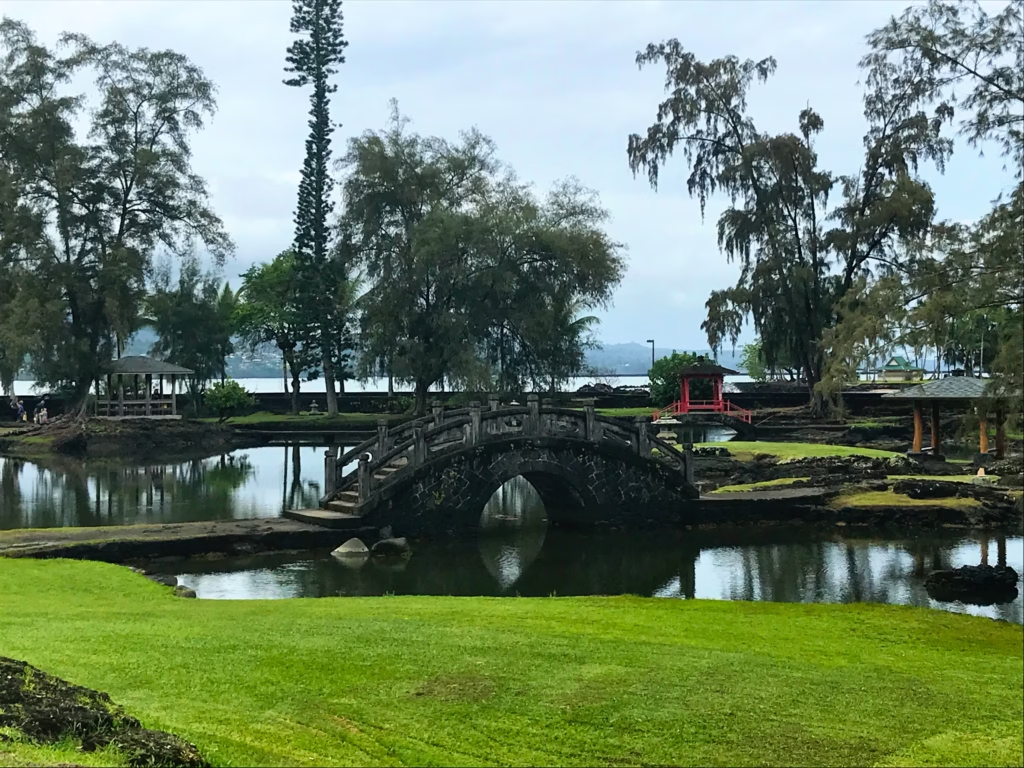
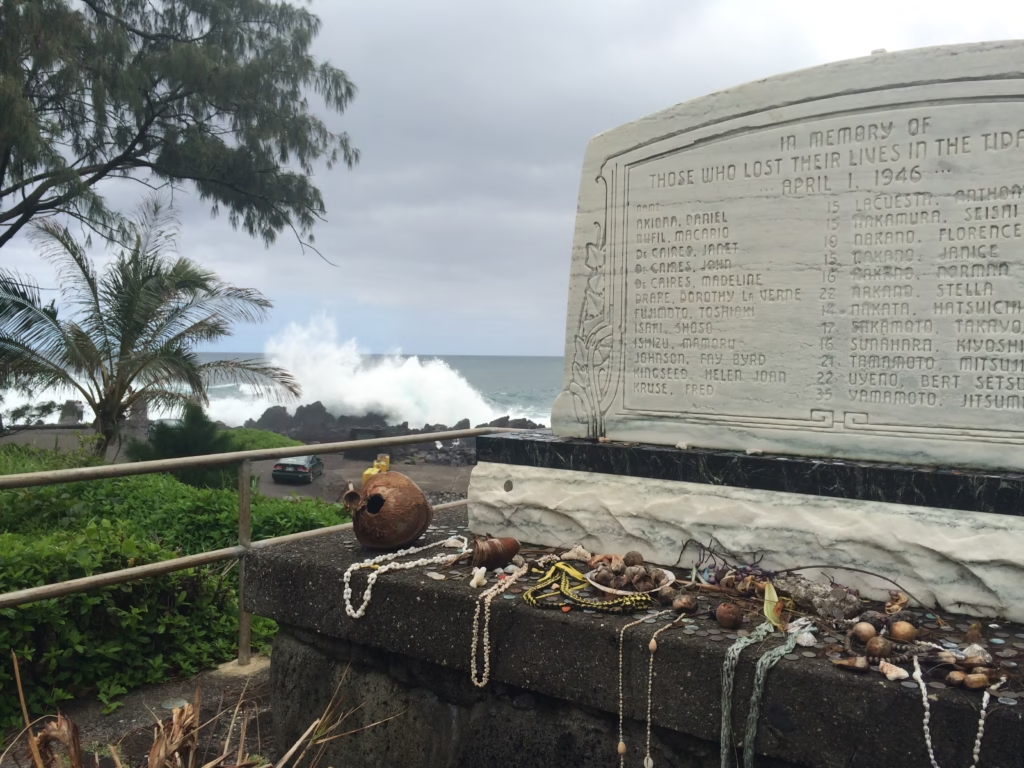
Local markets and food experiences
Hilo Farmer’s Market is open 7 days a week. Their big market days are Wednesdays and Saturdays. You can browse everything from fruits and vegetables to specialty items to crafts and gifts. There is free parking nearby, along with picnic tables and restrooms. They are located right along Hilo Bay. It is a great place to get some produce for your vacation, a plate lunch, and some souvenirs to bring home to friends and family.
Since you are already in downtown Hilo, browse the attractions, including wooden storefronts that host galleries, shops, and restaurants. The Palace Theater, built in 1925, is also here. Sig Zane Designs has a flagship store here for modern aloha fashion needs.
Big Island Candies, also located in Hilo, is worth a stop for chocolate lovers. Factory viewing is available Monday through Friday from 9-3:45. You can watch workers prepare the candies behind a glass screen. There is also a retail store where you can buy their products to enjoy on your trip or bring home as souvenirs.
Enjoy the Energy of Kona Town
Beaches, shopping, and dining
On the other side of the island, Kailua Kona is a sunny, laid-back beach town. Ali’i Drive is a scenic ocean road. You can walk or drive along the road and stop at shops and restaurants. There is also a smaller-sized farmers’ market here.
Kalikala Cuisine is a nice brunch stop right along the water. There are some nice seats overlooking the street and water. Service here is very friendly but a bit slow, so just take in the scenery and embrace island time. We enjoyed some nice local fruit mimosas here as well.
Kai Eats & Drinks is a shaded open-air eatery right on the water. It is a pretty casual place with beers on tap and a large menu that everyone will like. They serve burgers, tacos, pizza, and pasta. They do have a bit of a nicer menu for dinner as well.
Kona Canoe Club is also a nice restaurant with scenic water views and outdoor seating. It is located in the Kona Inn Shopping Center. They have plenty of options from salads to tacos to sandwiches.
Herbivores is a vegan cafe that is absolutely delicious. It is more of a casual daytime place. Seating is outside, basically in a parking lot. It is a small place, but we had no problems getting seating there and having lunch. They have things like breakfast burritos and taro burgers.
I don’t think you can visit the Kona area without stopping by the Kona Brewing Company for some “liquid aloha”. They have shaded outdoor seating with a lot of greenery. It is a nice place to have lunch and pick up some t-shirts or other souvenirs. They also do tours by appointment only.
Along Ali’i Drive there are plenty of nice shops to stroll around and buy souvenirs. They have everything from Hilo Hatties to local jewelry and art galleries. It is a fun place to walk around after brunch and weave in and out of the shops along the way.
Another hidden gem near Kona in Kainaliu is the Original Donkey Balls Factory Store. Because now there is more than one donkey balls store, apparently. I highly recommend popping in here for chocolate and macadamia nut souvenirs. They have chocolate-covered coffee beans, macadamia nuts. They have frosted balls, salty balls, dirty balls, you name it. They are all delicious souvenirs. It’s a fun place to visit! They also have a counter and sell things like fresh coffee drinks.
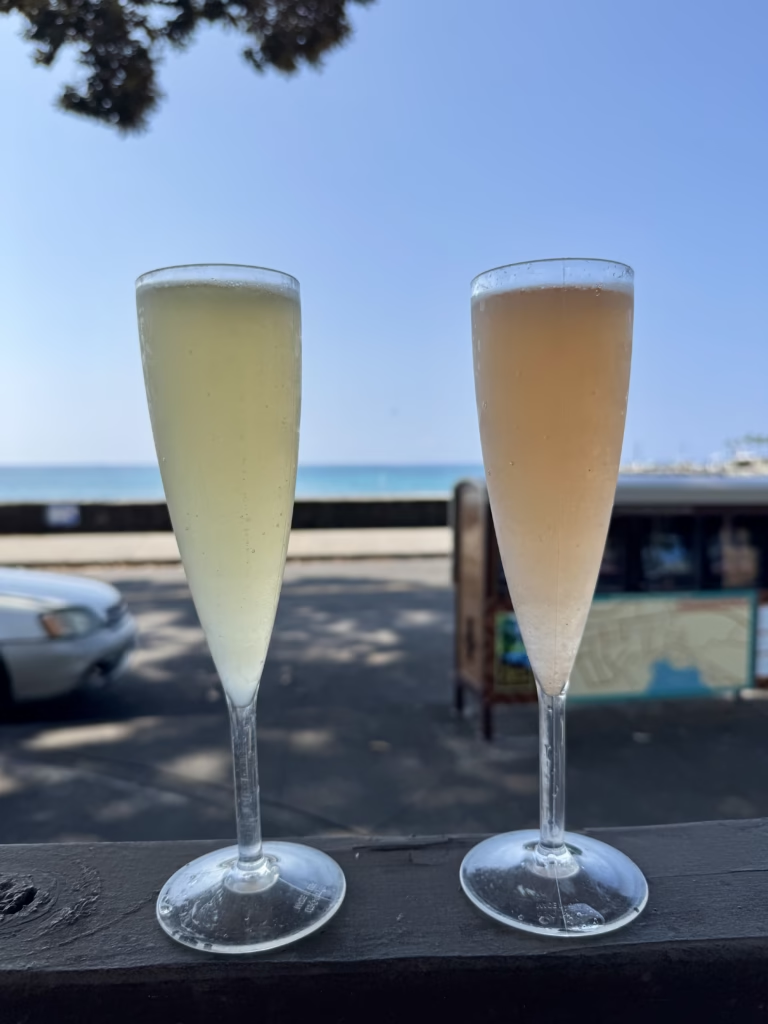
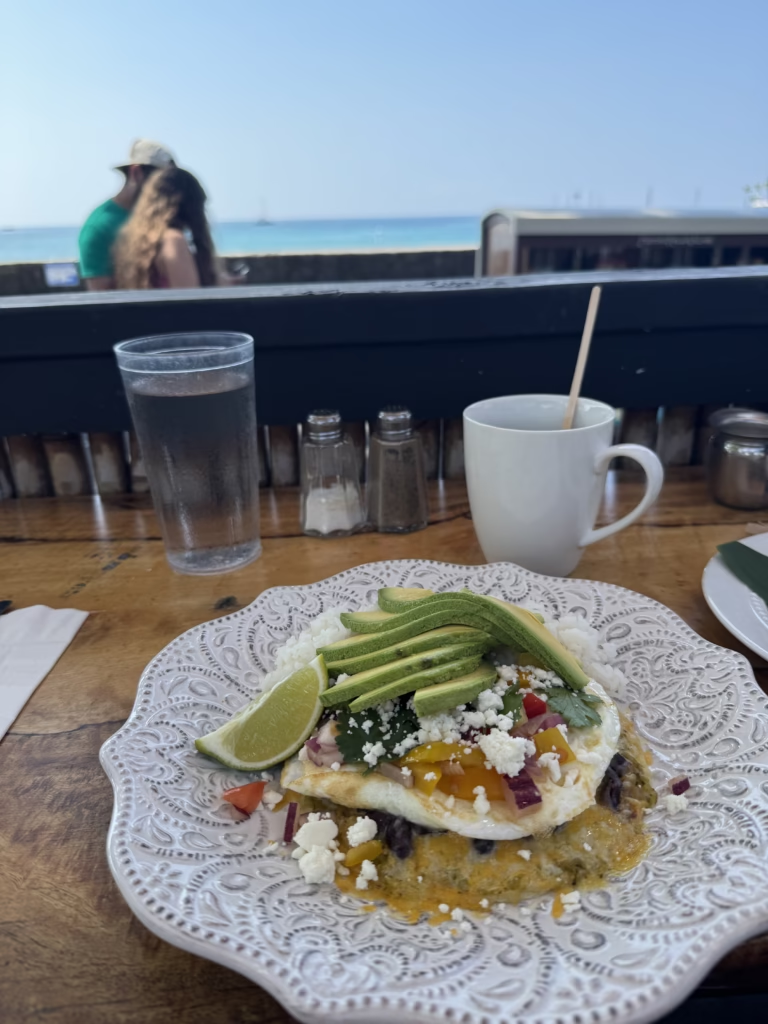
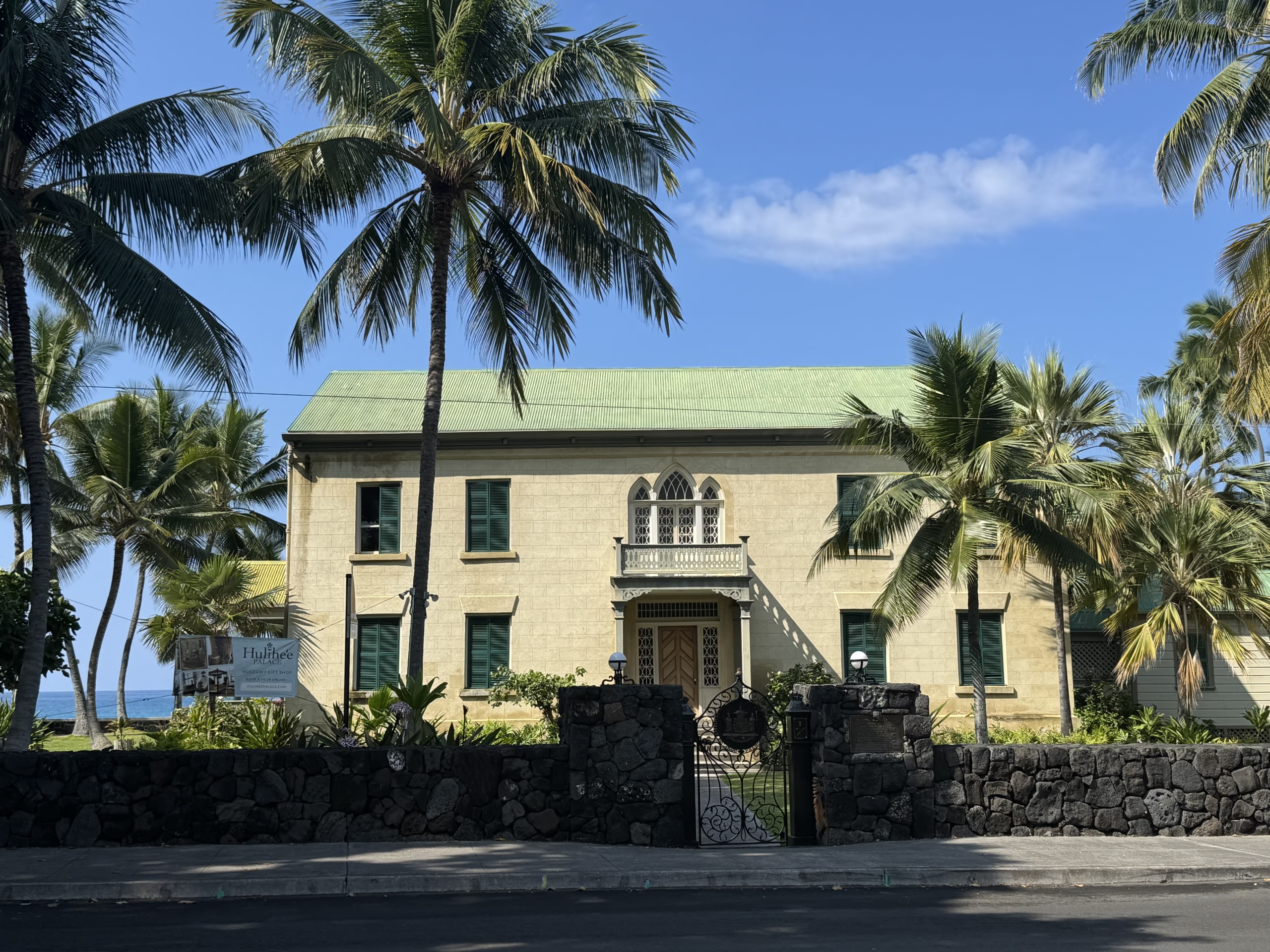
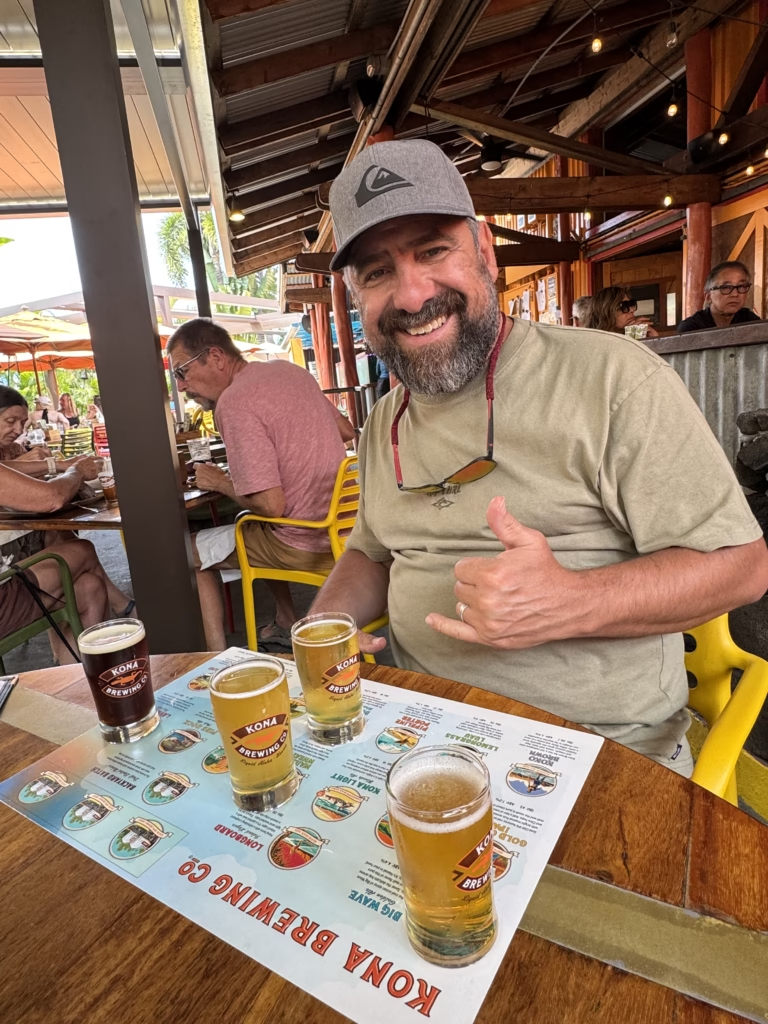
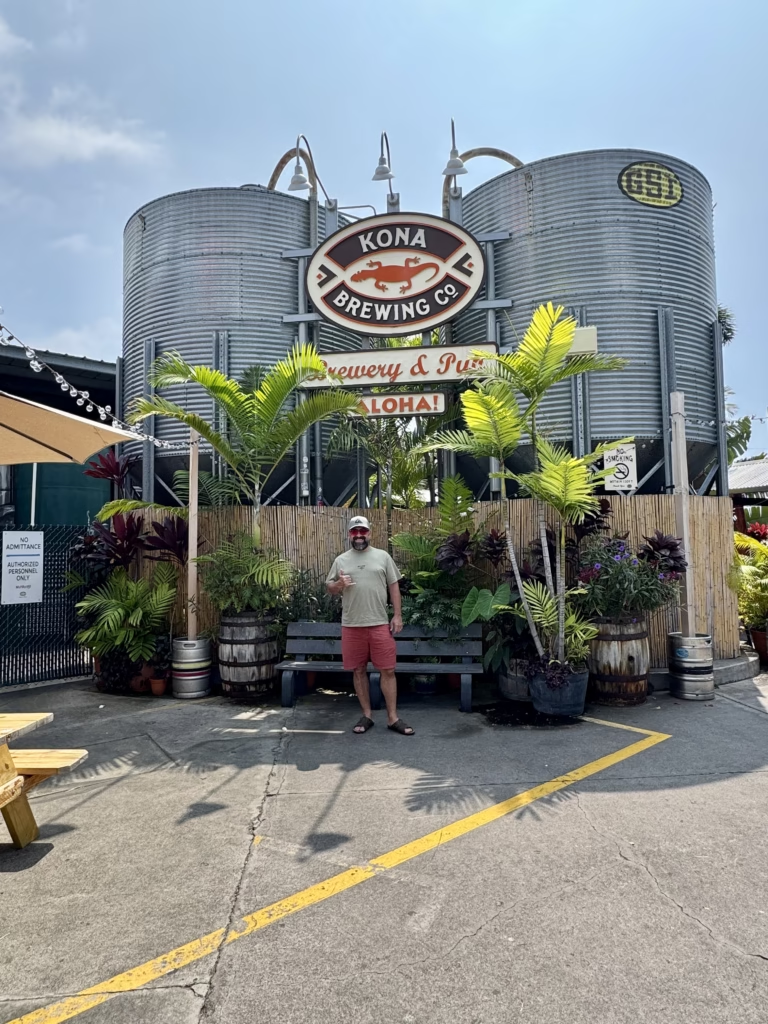
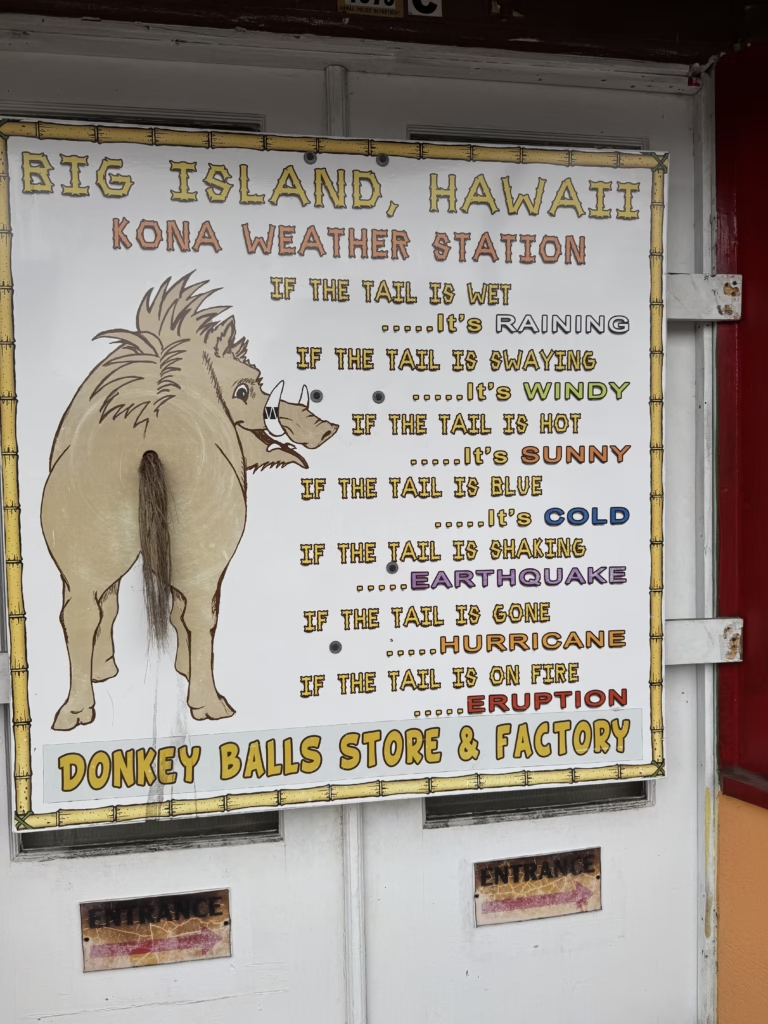
Cultural and Historic Places
Kamakahonu National Historic Landmark is right along the water in Kailua Kona. It is a reconstruction of the residence of King Kamehameha I. It is located on the grounds of the King Kamehama Hotel.
Hulihe’e Palace is right down the street. It is the former vacation home of Hawaiian royalty, now a museum. Admission is $16 for adults for a self-guided tour and $22 for a docent-guided tour. You can learn about Hawaiian history and the royal lineage as well as get a peek at the life they led. There is well-preserved furniture and clothing as well.
Tips for Visiting the Big Island
Best time of year to visit
I’ve said it before, and I will say again: there is no bad time to visit Hawaii. I have been to the Big Island of Hawaii three times, and each time has had excellent weather. The island is large, and there are microclimates. There might be a lot of rain on the Hilo side (which is always wetter), but dry and sunny on the Kona side.
The famous Ironman Triathlon is held in Kona around early October. That may make for a challenging time getting around the area unless you are there for that reason. You will often see people training during the year along the highways, but in October, there will be a big influx of people there for that reason.
How to get around the island
You need to rent a car here. The island is large and there is so much to see and do. You are going to want to plan your own itinerary and travel around the island in order to check things off your list. We rented a Chrysler Pacifica minivan, which was perfect for four adults. It was roomy for us to sit in, and traveling with our suitcases was much easier. We were glad we rented this instead of a small sedan, which is always a challenge to fit luggage into. It was truly the Cadillac of minivans!
Packing essentials for Big Island adventures
You do need to be prepared for all kinds of weather here. On top of the volcano, it can be cold and windy. You are at a high elevation there. Visiting rainforests and waterfalls can be cool and rainy. You are going to want to have rain gear and mosquito repellent. The Kona side can be hotter and drier, so it is best to pack the usual things like swimsuits, sunblock, and hiking gear. A good pair of hiking shoes will also help when visiting the Volcano National Park and hiking around.
Final Thoughts: The Best Things to Do on the Big Island of Hawaii
Our favorite experiences
Personally, I was so surprised when I first saw the island of Hawaii. When people think of Hawaii, they tend to mention Oahu or Maui. The Big Island is an incredible place with so much Hawaiian history and culture. The sheer size of it, the volcanoes, rainforests, waterfalls, lava rock landscape, and quaint towns mean you can keep coming back again and again and still have plenty to see and do.
Why the Big Island is perfect for travelers seeking variety
I think anyone who visits here will plan to come back and see things again or explore places they missed the first time. Personally, I have never seen the southernmost point of the United States (which is on the Big Island!) or done a snorkeling tour or visited a macadamia nut farm. All of these things will be on my list for a future visit.
Like I said above, there is something here for everyone. If you want to see more beaches, you can stay on the Kailua Kona side. If you want to immerse yourself in hiking, you can stay on top of the volcano. Hilo will give you a chance to see a part of Hawaii that has not been overrun with outsiders.
The history and culture from Waimea Valley Overlook to the statue of King Kamehameha, to the Puʻuhonua o Hōnaunau National Historical Park, was something I was not prepared for. It was extremely gratifying to learn all of the rich history that surrounds you. You do feel something special in the air when you are around these sacred spots. Don’t go to Hawaii Island without experiencing them for yourself!
FAQ
Important Note!
We recognize the use of diacritical markings of the (modern) Hawaiian language including the ʻokina [ʻ] or glottal stop and the kahakō [ō] or macron (e.g., in place names of Hawaiʻi such as Lānaʻi). However, you may notice these diacritical markings have been omitted on some parts of this website to ensure the best online experience for our visitors. We recognize the importance of using these markings to preserve the language and culture of Hawaii and respectfully use them in all communications beyond this website.

